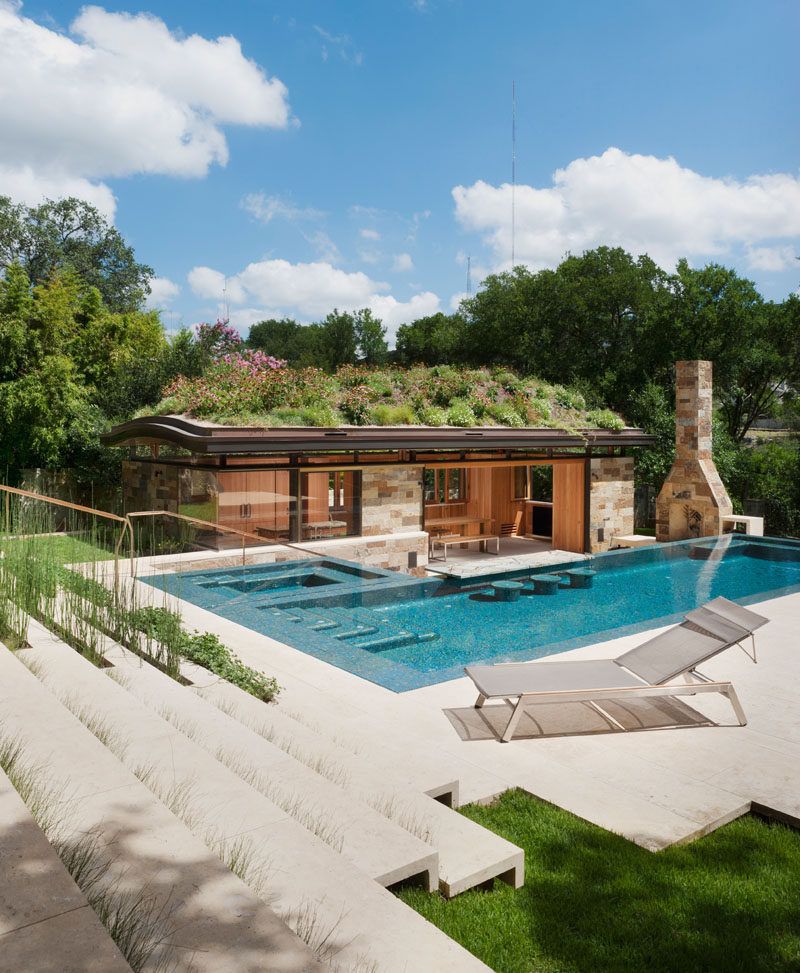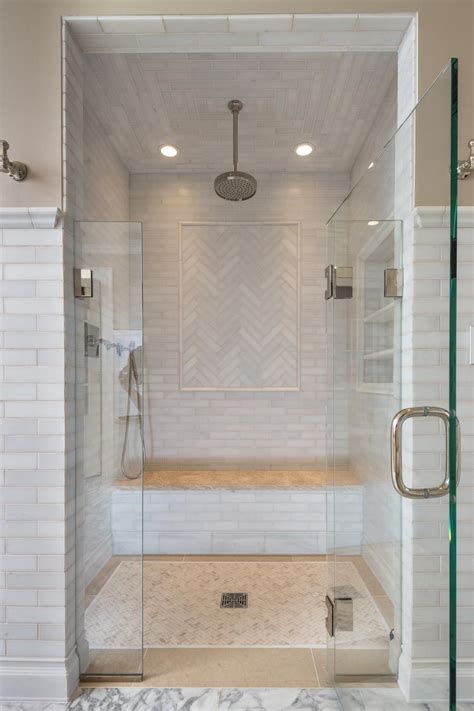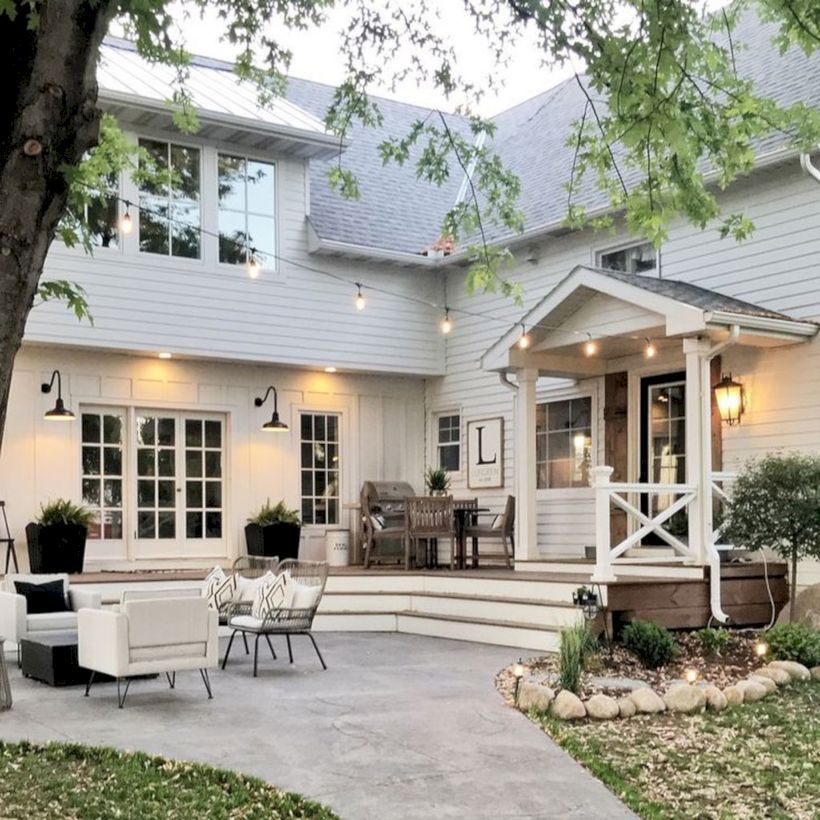How to choose bedroom colours
34 inspirational hues and combinations |
(Image credit: Davide Lovati/Zoe Feldman/Kitesgrove)
Bedroom color ideas can start from a paint shade you’ve fallen for, or a wallpaper design you just have to have. But they might begin with an upholstery fabric, or a love of a particular accent shade, for example.
And bedroom ideas can equally stem from a desire to create a particular mood or feel – with color the route to its creation. Color can soothe, warm, or nurture, and in doing so bring better sleep, make you feel more energized, or promote wellbeing.
Here, we’ve curated bedroom color ideas to inspire your own room decor and suggested ways to color combine, too.
Bedroom color ideas
Our selection of bedroom color ideas are sure to inspire you, whether you are looking for bold shades for your walls, or accents to enliven a simple scheme. From snooze-inducing blues to earthy pinks, these Feng Shui bedroom colors and room color ideas will help you choose the perfect hue for a good night’s sleep.
1. Choose warm earthy pigments
(Image credit: Little Greene Nether Red)
As spaces of relaxation, it's important for bedrooms to feel cozy and welcoming, so consider choosing warm, earthy tones inspired by natural pigments.
What colors make a bedroom feel warmer? 'Comforting natural tones are perfect for bringing warmth to bedrooms and can be used in an all-over scheme to create a cocooning feel,' says Ruth Mottershead, creative director of Little Greene . 'A deeper warm red such as Nether Red will create impact with a sophisticated and nurturing feel.'
This earthy pinky red with a warm yet elegant feel which would work well in traditional bedrooms.
2. Select a soothing green
(Image credit: Future / Polly Wreford)
Inextricably linked with the natural world, green is a brilliant choice for bedrooms as it helps bring the nurturing powers of nature into the home and creates a soothing, relaxed feel, which is particularly important in spaces where we recuperate.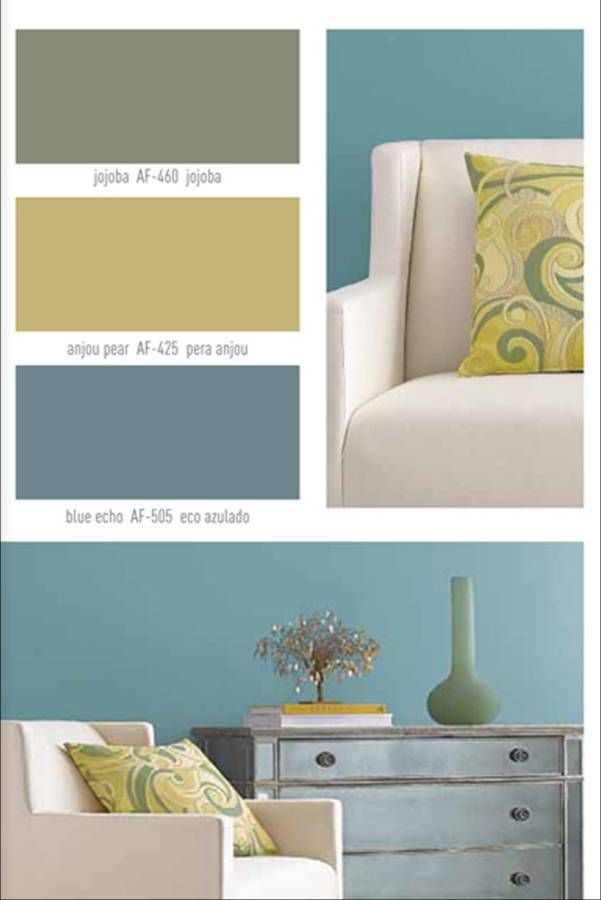 It is also one of the most relaxing colors, according to experts.
It is also one of the most relaxing colors, according to experts.
'The bedroom needs to be a space in which to escape the day's stresses and carve that time out for us to focus on our health, wellbeing and getting the best night's sleep possible,' says Emma Deterding, founder and creative director, Kelling Designs .
Delicate pastel shades are guaranteed to create a restful feel. To bring life to green bedroom ideas consider adding accessories in a soft pink accent color or creating a feature headboard in a decorative fabric.
3. Embrace restful lilac tones
(Image credit: Brent Darby)
Currently witnessing a revival within interior design, soft and elegant purples such as lilac and lavender make wonderful shades for relaxing bedroom ideas.
’Once known as the color of the nineties, lilac is having a bit of a comeback as a natural go-to partner for the ever popular shades of grey, says Sarah Vanrenen of Vanrenen GW Designs . 'The paler shades of lilac and mauve are surprisingly versatile and when applied correctly, can be undeniably pretty. '
'
If you love lilac, consider using it on all four walls as part of a purple bedroom idea, alternatively it can make a beautiful accent color. 'Having all the walls in a room painted lavender can be a bit too much so an accent wall is preferred,’ suggests David Harris design director at Andrew Martin . ‘To add a modern touch to this relaxing shade, I’d pair it with soft gray hues for a cool and contemporary scheme.'
4. Introduce orange accents
(Image credit: Future / Darren Chung)
Warm and joyful, decorating with orange is guaranteed to appeal but it can be over-powering when used wall-to-wall in a bedroom. As an alternative, try introducing it as an accent color through cushions and lampshades.
Sitting opposite green on the color wheel orange makes a natural partner for green and look beautiful when paired as this green bedroom demonstrates. 'Introducing orange-toned soft furnishings and accessories to a textural space can bring it to life and make it feel immediately inviting,’ says Sam Hood, chief creative officer at Amara .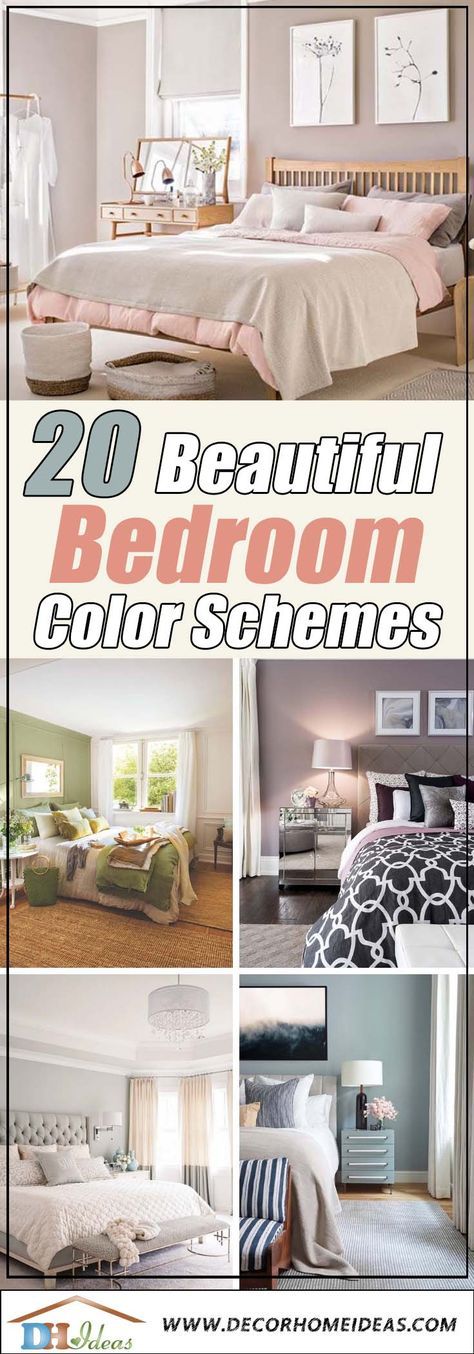
5. Start from a fabric
(Image credit: Kelling Designs)
If you're unsure where to begin with bedroom color ideas then choosing a beautiful multicolored fabric for an upholstered headboard can be a good place to start as it gives plenty of shades to use as the basis for a scheme.
'Opt for an upholstered headboard as it will allow you to introduce color and pattern to the space, whilst acting as an anchor on which to base your design scheme,' suggests Emma Deterding, founder and creative director, Kelling Designs . 'Highlight key colors from the headboard fabric and use cushions and accessories in these shades throughout the room to create a cohesive look.'
In this small bedroom soft, uplifting tones of pale blue and lemon have been picked out from the headboard fabric to keep the space feeling light and airy.
6. Choose dark colors for a cocooning feel
(Image credit: Future)
Bedrooms are private spaces where we relax and unwind so it's important we enjoy being in them.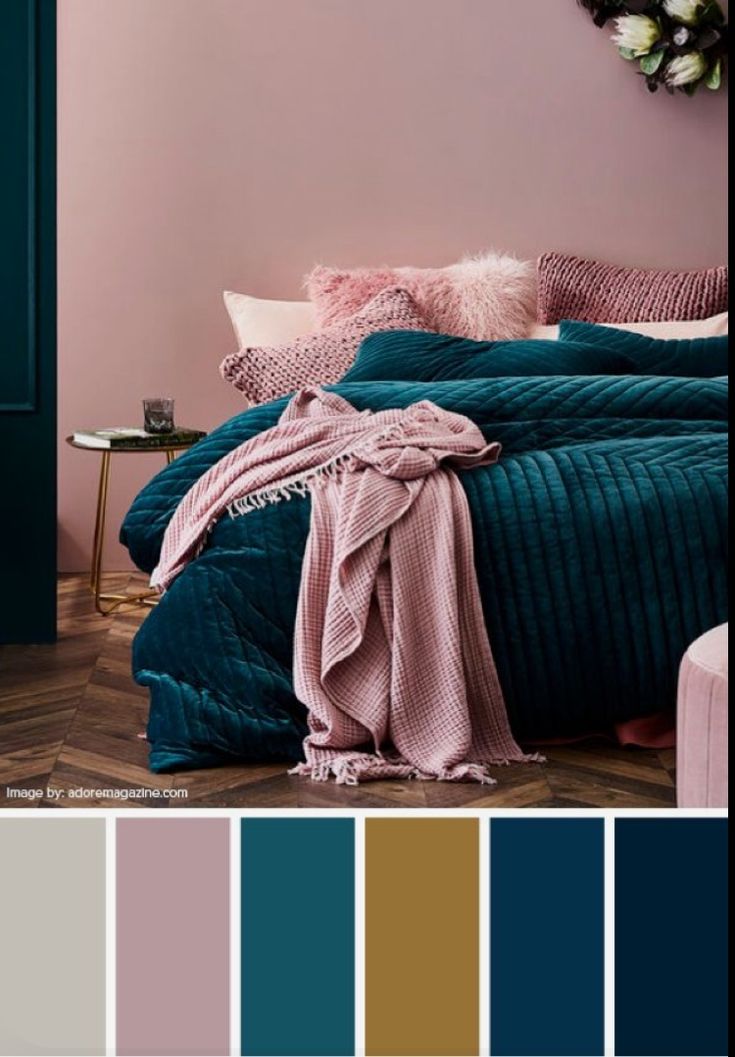 When choosing bedroom color ideas think carefully about the mood you want evoke, suggests Sam Hood, chief creative officer at Amara .
When choosing bedroom color ideas think carefully about the mood you want evoke, suggests Sam Hood, chief creative officer at Amara .
‘Choose a color scheme that’s going to make you feel calm and unapologetically you. If you’d like to feel cozy and safe, a darker color palette might suit you whereas if you’d like to feel awake and refreshed, a lighter color scheme mixed with brighter tones may be the perfection option.'
To prevent dark bedrooms feeling drab and lifeless consider brightening them up with a vibrant accent color such as zesty yellow.
7. Keep your bedroom color scheme soft and gentle
(Image credit: Gunter & Co)
This is a contemporary bedroom but the use of soft tones, shapes and details creates connection with nature that makes it appear almost timeless.
‘For this Chelsea house project we worked to a selection of nature-inspired finishes,’ says Irene Gunter of design practice Gunter & Co , ‘with a strong preference for earthy terracotta and green and blue tones which are offset against sleek black details.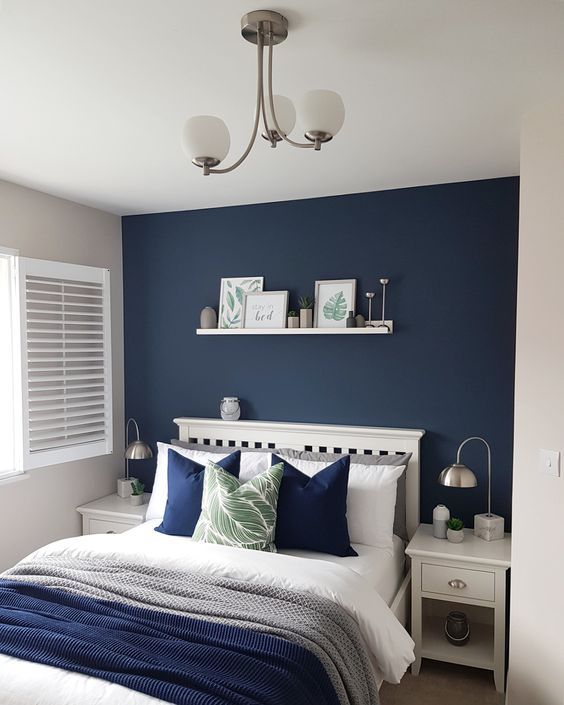 ’
’
Irene describes this bedroom as having ‘a lovely, cozy shape’ which was further enhanced by the ‘warm, enveloping’ hand-woven texture of the wallcovering – Casablanca from Altfield . ‘Having a curved headboard also allowed us to have a more generous bed size without it overwhelming the wall behind.’
8. Start with a moodboard
(Image credit: Button & Sprung)
A moodboard can be the best starting point for bedroom color ideas. ‘Choosing the right colors for a bedroom design scheme is important when deciding how you want your personal space to make you feel – this may reflect a love of bright colors and opulent tones, or be more neutral and natural,’ explains Adam Black, co-founder of Button & Sprung .
‘To help determine the most suitable color palette for your bedroom, we recommend creating a moodboard and ordering swatches and fabric samples; this will allow you to experiment with color and texture to see what works for you.’
If you are undecided, make more than one moodboard and monitor what works and what doesn’t in different lights – and how each color scheme makes you feel. Learn how to make a moodboard to ensure that you've covered all the key elements of your space.
Learn how to make a moodboard to ensure that you've covered all the key elements of your space.
9. Combine soft hues with bold brights
(Image credit: Nicola Harding)
In this bedroom by interior designer Nicola Harding, the jewel green of the client’s husband’s dressing room contrasts perfectly with the soft pink walls of the bedroom (Farrow & Ball’s Setting Plaster).
‘We created an overall color palette that flows through the house and therefore has a sense of harmony,’ says Nicola. ‘We used paler colors in the rooms that have good light and stronger colors in the darker rooms.’
Arguably, the standout feature of this room is the vibrant headboard. Pattern on headboard ideas not only injects energy but, as Nicola points out, is also more forgiving than a plain one, should it mark. She had this headboard made by Naturalmat using the Carolina linen from Vanderhurd.
10. Consider the orientation of your bedroom
(Image credit: Benjamin Moore)
The orientation of your room is important when you choose bedroom color ideas.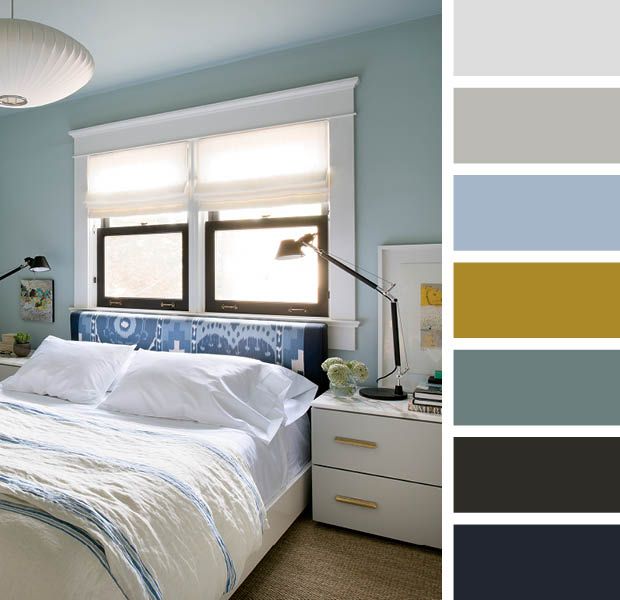 This is because the quality and temperature of light varies depending on whether your bedroom is north-, south-, east- or west-facing.
This is because the quality and temperature of light varies depending on whether your bedroom is north-, south-, east- or west-facing.
For example, a north-facing bedroom will have cooler light and therefore needs warming up with pinks, yellows and orange shades – or hints of them, like in this room above by Benjamin Moore .
A south-facing bedroom will have more of a glow and as such can take cooler blue or gray bedroom ideas. East-facing rooms get the sun early on and they work well with greens and blues; west-facing rooms get the sun in the afternoon so suit colors similar to east-facing spaces – their orientation is more balanced essentially.
If you prefer neutrals, then choose tones that will cool down or warm up the space, depending on its orientation – a warm pale pink for cool rooms, for example, or a barely there gray for sunny spaces.
11. Modernize your neutrals with gray
(Image credit: Jonathan Adler)
If you’re looking for a neutral bedroom scheme that feels fresh and modern, embrace gray bedroom ideas.
‘Grays are hugely versatile, from cool off white shades, through warmer neutral mid tones to the very deep and mysterious,’ says Judy Smith, color consultant at Crown . The walls of this bedroom put together by Jonathan Adler lean towards the darker end, but are kept fresh by being paired with crisp white.
‘They have more color and texture within them than straight black,’ adds Smith. ‘A monochrome scheme of black and white is much more unforgiving than shades of slate and clay, which will change subtly with the light throughout the day, giving them personality and character.’
12. Are you a morning or evening person?
(Image credit: Gillian Segal/Ema Peter)
‘Bedrooms are deeply personal spaces and should be decorated accordingly,’ explains Joa Studholme, color curator for Farrow & Ball .
‘If you are a morning person who likes to jump out of bed and attack the day first thing, then you are probably more suited to having a clean, light energizing color on the walls. Evening people will more likely embrace the dark, womb-like shades or a sumptuous wallpaper.’
Evening people will more likely embrace the dark, womb-like shades or a sumptuous wallpaper.’
Smokey blues – as in this sophisticated blue bedroom by Gillian Segal Design – will suit evening people. You can add a spot of luxury with some velvet accessories and gold elements. Mahogany pieces create depth, too.
13. Go from morning ‘til night with white
(Image credit: Paul Raeside)
Heading towards the lighter end of the spectrum, white bedroom ideas have the unique ability to feel both soothing and calm before sleep, but bright and airy in the mornings. Layer whites on whites to create a sophisticated, elegant scheme and embrace both gentle tonalities of white – from dove grey to ivory – as well as layers of texture. On the bed, use classic crisp white sheets as the base, and make the room feel cozy with woolen blankets and boucle cushions.
14. Look to your headboard for color inspiration
(Image credit: Future)
Bed and headboard ideas are the focal point of a bedroom, and are often the starting point around which to center bedroom color ideas.
Choosing a bedroom color that takes an accent shade from your headboard's fabric – or indeed acts as a contrast – will add depth and detail to the scheme.
Mariana Ugarte, co-founder of London based design studio Interior Fox , explains: ‘An upholstered headboard is an easy way of injecting color and texture into your bedroom, especially when designing within a smaller space.
'For a luxurious look, introduce plush velvets in rich earthy tones; these work well against a neutral backdrop while keeping the space light and airy. Add contemporary piping in a contrasting color to the edge of your headboard; this instantly adds a twist to any standard headboard and broadens the color scheme.’ To choose the right shades, use a color wheel.
15. Rouse yourself with earthy reds
(Image credit: Davide Lovati)
Your bedroom scheme needs to not only help you fall asleep, but be a pleasant environment in which to wake up. ‘As a guide, warm colors such as red, orange and yellow are considered to be stimulating while cool colors such as blue and green tend to be more restful,’ says Smith.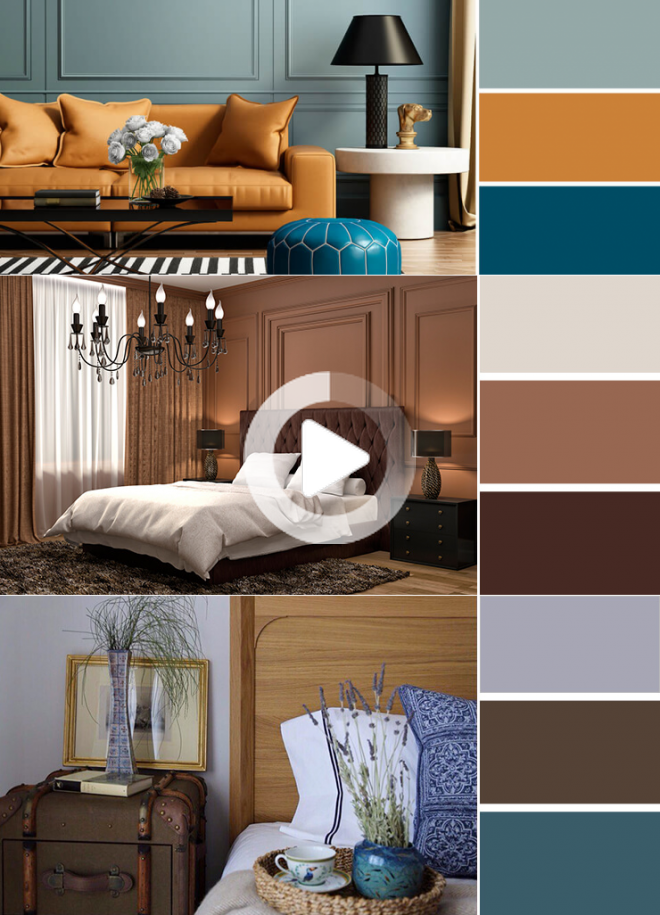 ‘It’s useful to consider these factors when designing spaces, we live, work and play in.’
‘It’s useful to consider these factors when designing spaces, we live, work and play in.’
If you’re the type who likes (or needs) a bit of get-up-and-go in the mornings, consider earthy tones of red. While not traditionally thought of as a bedroom color, these reds are at once regal and romantic. To keep this choice feeling modern, choose a red with an orange undertone, pair with crisp white ceilings, and accessorize with ochre pieces like in this North African-inspired scheme.
16. Choose primary, secondary and tertiary colors
(Image credit: Corine Maggio/Carley Page Summers)
Picking the primary color for a bedroom may not be inspired by a large feature, such as a bed – so if you are originating your bedroom color scheme from scratch, ensure you choose second and tertiary accent shades before you start to decorate.
‘It's great to pick a color that you want to be the primary color in the room and then make sure it's in a prominent place, whether it's the headboard, wallpaper, rug or drapery,’ says Corine Maggio, founder of California-based CM Natural Designs .
‘Then you'll want to repeat that color somewhere else in the bedroom but in a smaller way, and blend in a secondary or tertiary color through your choice of pillows, art, accessories or, again, rugs or bedroom wallpaper ideas.
'The key is finding the right balance between the bedroom colors you're using, and don't be afraid to try something new. Find the big pieces you know will work and then take some chances with the smaller items. You can always replace those if need be.’
17. Choose blue for a serene scheme
(Image credit: Alexis Hughes & Co/Raquel Langworthy)
‘I love blue in bedrooms because it’s contemplative and calming,’ says artist and color expert Annie Sloan . ‘My bedroom is painted in deep dark Aubusson Blue because I wanted the space to feel cosy and calm.’
An enduring favorite, blue bedroom ideas are proven to have a soothing effect on the brain, helping ready you for sleep. While lighter blues or bold accents are more instinctive choices, don’t be afraid to use darker shades on the walls.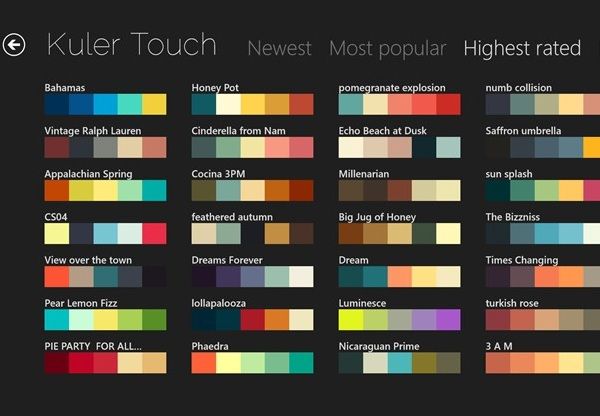 In this bedroom by interior designer Alexis Hughes , a deep navy blue paint is paired with white ceilings and a gloss finish to allow light to bounce around the room.
In this bedroom by interior designer Alexis Hughes , a deep navy blue paint is paired with white ceilings and a gloss finish to allow light to bounce around the room.
18. Combine bedroom paint colors with wallpaper
(Image credit: Paint & Paper Library)
How fabulous is this bedroom by Paint & Paper Library ? We often think of wallpaper being multicolored, but it works really well in a monochromatic scheme if you pick the right design, plus you can use it as a great swathe of color if you don’t want plain painted walls.
This all-encompassing green bedroom color scheme will suit those who want to relax in a soothing and calming environment. The wallpaper is cleverly designed to fade as it gets to the top, and perfectly matches the ceiling color.
19. Head over to the dark side
(Image credit: Dan Duchars)
Far from being fodder for moody teenagers only, dark bedroom schemes are gaining in popularity among the design conscious, with even black bedroom ideas making waves among jewel tones of blue, burgundy and green.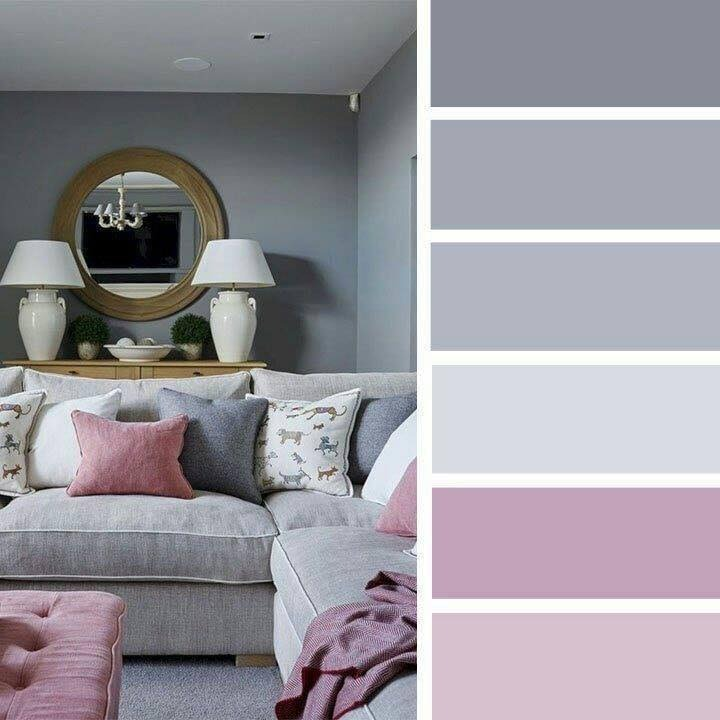
‘Darker tones of charcoal can be used to add drama anywhere in the home, from a living room to a bedroom or even a small hallway,’ says Smith. ‘With clever lighting and mirrors you can create a look that is both strong and atmospheric.’ In this bedroom, a black-based wallpaper design is built upon with patterns-on-patterns in autumnal tones, a black four poster bed framing the look.
20. Choose patterns to complement bedroom colors
(Image credit: Jane Churchill)
When you want to use a mixture of different scale patterns, the best way to start is with a single color – take the sage wall in this bedroom by Jane Churchill as an example.
Then, find a variety of patterns and prints you love that have this key color in them. It could be subtle – a leaf or a stripe – but it will be enough to tie it in with the main color that will then anchor the patterns. Then you can use them on the headboard, pillows, drapes and throws.
21. Let the natural world in with green
(Image credit: Kitesgrove)
Following a huge paint trend across much of the home, green bedroom ideas are a great way to channel the invigorating and relaxing qualities of the natural world.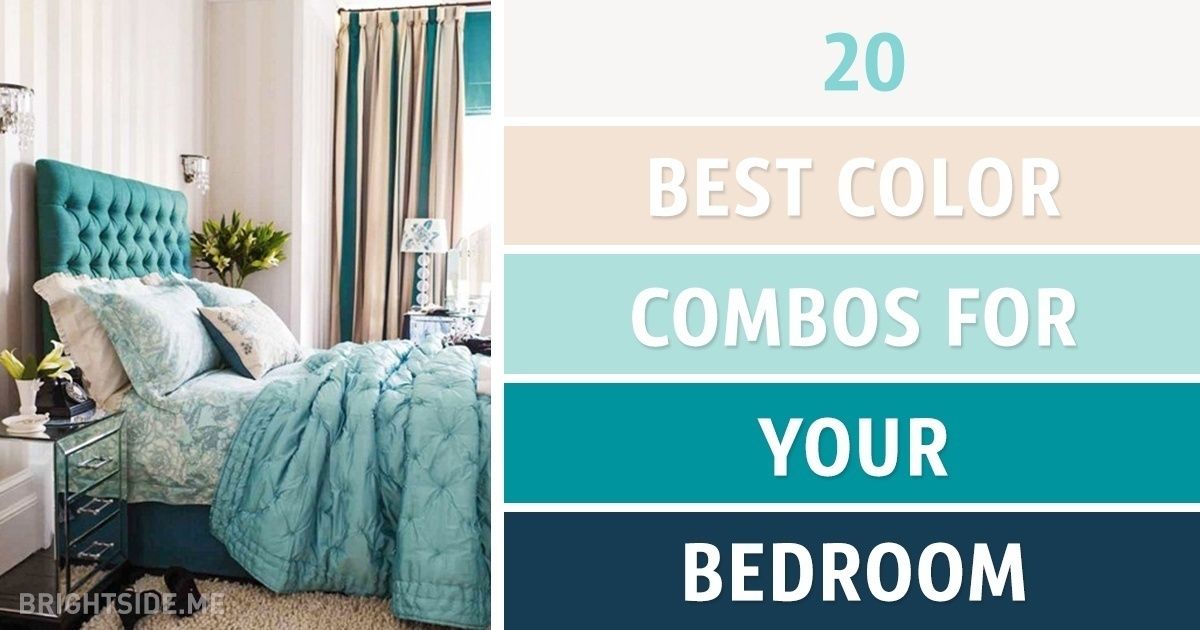 ‘Green is a grounding, calming colour and works beautifully in bedrooms, especially when paired with the right lighting to make the most of all the pigments in a high-quality green,’ says Sloan.
‘Green is a grounding, calming colour and works beautifully in bedrooms, especially when paired with the right lighting to make the most of all the pigments in a high-quality green,’ says Sloan.
In this room by design agency Kitesgrove , a small format white and green wallpaper is paired with a deep emerald velvet headboard. ‘Greens are soothing and a bit more unexpected than a blue if you are trying to introduce color,’ says interior designer Zoe Feldman . ‘Incorporating wallpaper can create a ‘jewel box’ that hugs you in your bedroom.’
‘Dark green paint colours are best used in a space with good natural lighting or somewhere you’re hoping to create a sense of cosiness and safety,’ adds Sloan.
22. Consider your color under all light levels
(Image credit: Paint & Paper Library)
We talked about choosing the bedroom color ideas depending on your room's orientation, above. But don't forget to factor in your bedroom lighting ideas.
Choosing bedroom colors should be done by lamplight, too, as colors change dramatically under artificial light: white bedrooms will look creamy, pale neutrals will look deeper and darker, and dark schemes like the one above will look near-black.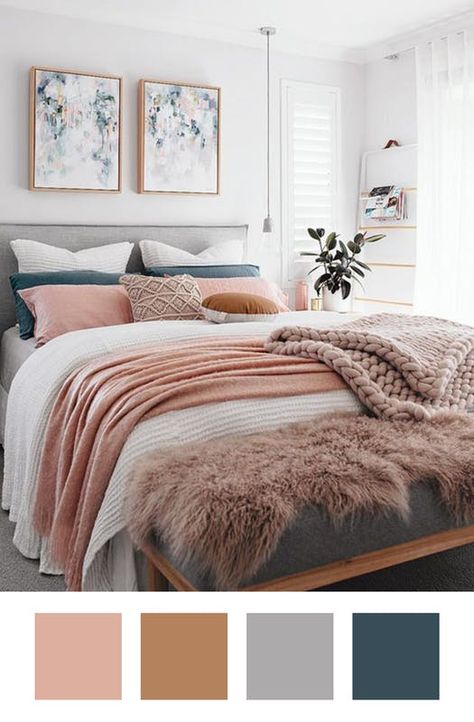
To make dark bedrooms work, balance is your best friend – keep the dark tones on the wall and accessories, and use pops of pale shades for contrast. Keep the ceiling light so it’s not overpowering and use mid-toned wood flooring – parquet is great as it adds a subtle pattern to the scheme.
23. Warm up blue’s benefits with purple
(Image credit: Alicia Taylor)
‘Purples in general are warm, comforting colours,’ says Sloan. ‘They have the receding values of blue, making a space feel larger, as well as the warming properties of red, making a space feel cosy. This makes them great for bedrooms.’
When picking your purple, you’ll need to choose your shade carefully to avoid the scheme feeling dated. Pick a tone with some grey in it like in this example, stay light with pale periwinkles, or delve into the dark bedroom ideas trend with eggplants, mulberries and grapes.
24. Add bold accent colors to neutral schemes
(Image credit: Pooky)
Accent colors are the perky color, the standout burst that complements and pushes the scheme to new heights. They are used for the accessories – throws, pillows, rugs, vases and, more commonly at the moment, lampshades.
They are used for the accessories – throws, pillows, rugs, vases and, more commonly at the moment, lampshades.
Rohan Blacker, founder of Pooky explains: ‘Bedrooms are the perfect room in the house to experiment with shade colors, using brighter hues to add accent tones to your scheme or to match a throw or a pillow.
'We have seen an uplift in sales of our brighter, more vibrant shade varieties; customers are pairing them with more neutral pared-back interior schemes, or perhaps just finding the confidence to go for a more adventurous design.’
Are you a morning person? The bright bolds will work for you.
25. Layer harmonious colors
(Image credit: Zoe Feldman)
Of course, it’s often not just one color you’re looking to decorate with in a bedroom – especially if you’re delving into the world of bedroom wallpaper ideas like in this example by Feldman. To create a coherent scheme that feels unchallenging and enveloping at the end of the day, layer up on harmonious colors i.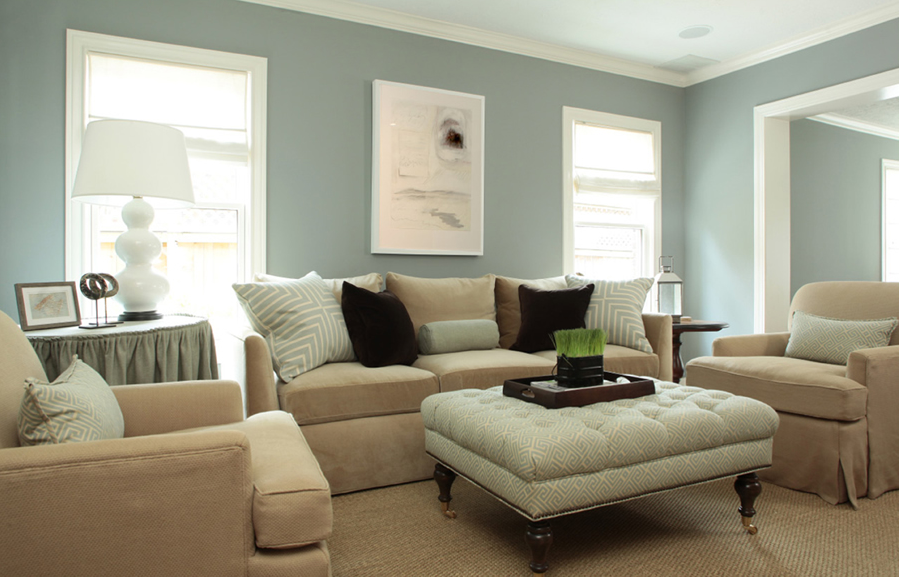 e. ones that sit beside each other on the color wheel. In Feldman’s design, a green-based wallpaper is paired with blue and yellow scatter cushions on the bed, mirroring the details in the pattern.
e. ones that sit beside each other on the color wheel. In Feldman’s design, a green-based wallpaper is paired with blue and yellow scatter cushions on the bed, mirroring the details in the pattern.
26. Pick matching tones to create a calming scheme
(Image credit: Salvesen Graham)
We’re not all fans of color and drama, and there’s something so beautiful about a well chosen neutral color scheme – especially if you want your bedroom to feel restful. And if the remainder of your house has the same feel, then matching your bedroom to your neutral living room ideas, for example, will add cohesion.
Mary Graham, co-founder of Salvesen Graham shares her advice: ‘We often start our bedroom schemes with a more muted palette in mind, particularly for master bedroom ideas, but still relate to the colors in the rest of the house.
'You want to create a room that is light and bright in the morning but cozy in the evenings. Think about how choices of fabric will affect how sounds and noise might come into the room.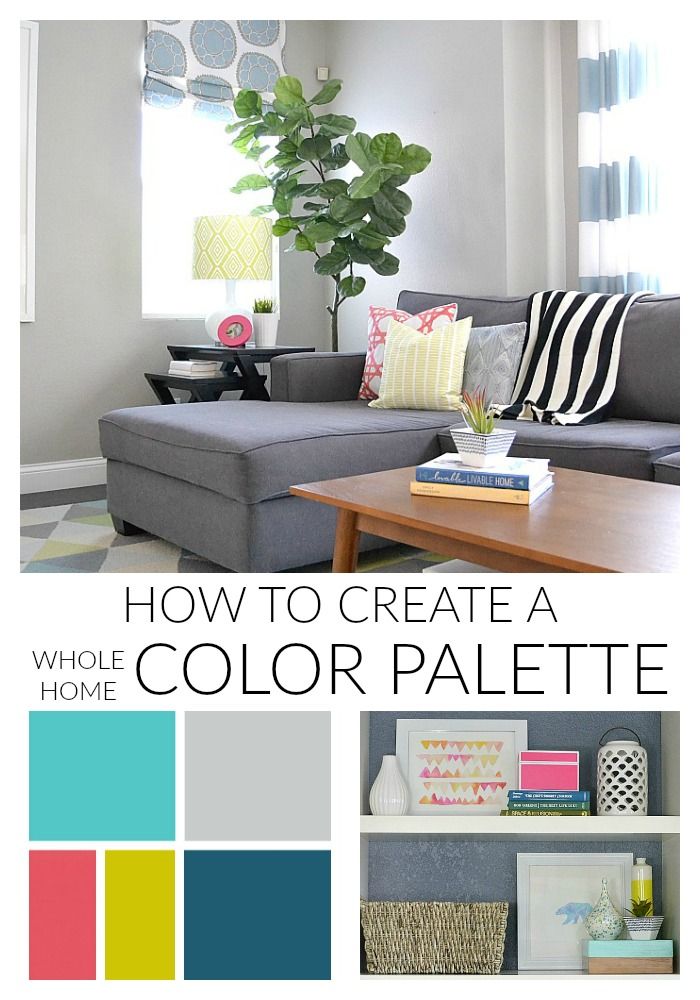 Fabric walling is a great choice, if budget allows, for acoustics.’
Fabric walling is a great choice, if budget allows, for acoustics.’
27. Rethink pink and choose a natural shade
(Image credit: Kitesgrove)
Long gone are the days when pink was just for bedroom ideas for girls. The color is gaining traction across all rooms of the house, and showing a new, earthier side to itself. Pink’s comforting qualities make it a perfect pick in a bedroom for all genders, but to make it feel modern, avoid the sugary sorts. Opt instead for pinks with brown undertones, from orange-laced terracotta to a natural blush like in this bedroom, also by Kitesgrove, and pair it with muted shades and natural textures
28. Take one color and explore all of its tones
(Image credit: Simon Bevan)
While sticking strictly to one color may sound like an easy way out of concocting color combinations, going monochromatic can make a real statement.
‘To make an impact, use one color – or tones of one color – in a room,’ says Smith.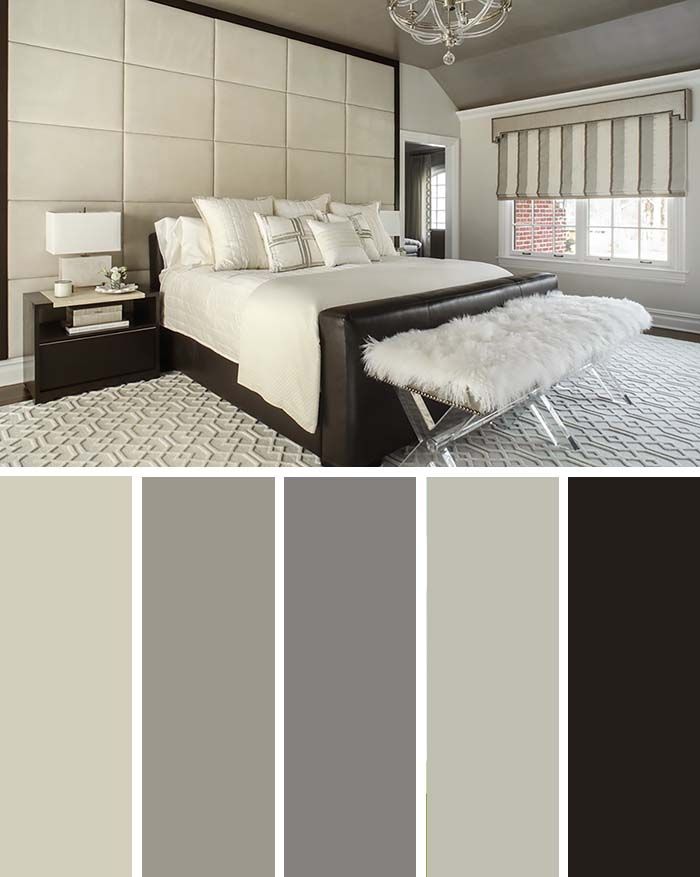 ‘If you paint walls, skirting, doors, cupboards, radiators – and even window frames – in the same color it will look thoughtful and sophisticated.’
‘If you paint walls, skirting, doors, cupboards, radiators – and even window frames – in the same color it will look thoughtful and sophisticated.’
In this example, a tonal palette is explored through the soft furnishings used in the bed ideas. Brown ochres are explored from pale incarnations on the bedspread through to robust, warm examples in the woven headboard and lampshade, through to dark details in the scatter cushions.
29. Add interest with all-over floral
(Image credit: Emma Lewis / Soane)
Dahlias have been enjoying a wild resurgence in popularity, so Flora Soames’ wallpaper was a bold, on-trend choice here. ‘It sets the tone for the layering of antiques and fabrics, from Soane’s Jajim Stripe curtains to an antique cushion on the chair,’ she says.
‘When choosing fabrics and soft furnishings, opt for co-ordinating rather than matching to prevent the room from looking contrived,’ says interior designer, Birdie Fortescue. ‘Try basing colors on a piece of art or favorite print – this makes a great jumping off point. ’
’
30. Evoke stillness and serenity with color
(Image credit: Little Greene)
To create a soothing space, opt for deep soporific hues such as Little Greene’s Millefleur Tapestry wallpaper in Knight from National Trust Papers II Collection,’ says the company’s creative director Ruth Mottershead. ‘It works wonderfully as a feature wall behind the bed.’
31. Decorate with a soothing blue color palette
(Image credit: Mark Bolton)
If you crave a calming atmosphere in your bedroom, blue – in all its variations – could be the solution.
Katie Lion, an interior designer with Kitesgrove, chose blues for this small but soothing space: ‘The inky teal is a beautiful color that instantly feels sophisticated and calming. We didn’t want it to take over the room so we limited its use to the headboard, cushions and built-in cupboards, then used a paler blue for the walls and ceiling (Farrow & Ball’s Skylight) which helps the room feel light and balance the darker blues' - a great option for bedroom ceiling ideas.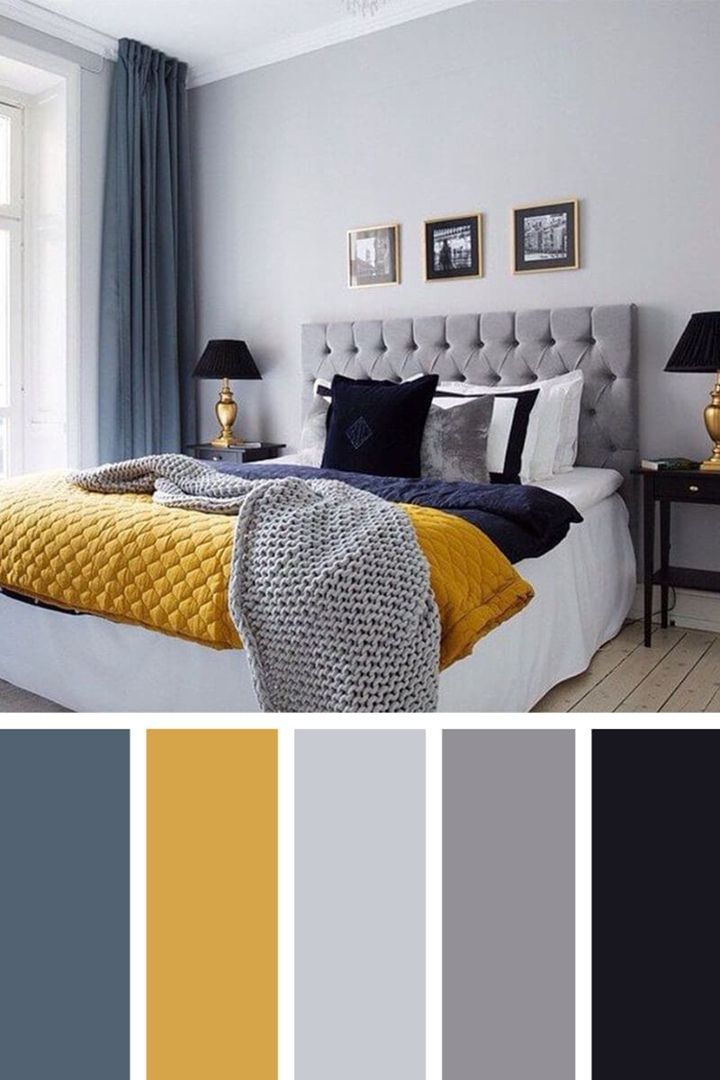
Katie used space-saving tricks such as wall lights (the Padma sconce with wicker shade from Arteriors), to create more surface space on bedside shelves, and discreet under-bed storage ideas.
32. Factor in harmonious hues
(Image credit: Jessica Summer)
This bedroom is all about a harmonious duet in green and white. Verdant imagery and a garden room concept were central to this flat by interior designer Jessica Summer. ‘This leafy wallpaper by Liberty was the perfect note for this look,’ she says.
‘I love colorful rooms, but I like to introduce this with tonal variations and textures, rather than strongly contrasting colors,’ explains Jessica. ‘This makes a cheerful yet balanced space one will never tire of.’
33. Take a bold approach to color and pattern
(Image credit: Kate Guinness)
Use treasures from your travels to give your bedroom both artistic interest and personal meaning. ‘We designed this vibrant girl’s bedroom to complement the client’s art collection,’ says interior designer Kate Guinness who sourced the rug in Morocco.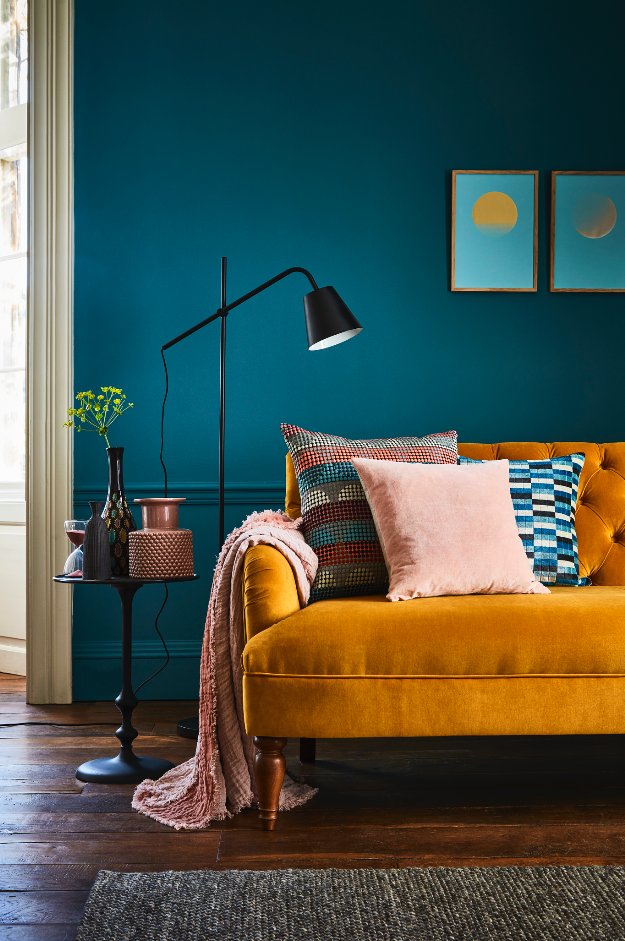
34. Work in threes
(Image credit: Tom Morris)
A simplified palette can be a good way to approach a bedroom, especially when you are daunted by the sheer variety of color options.
‘Any more than three colors in a bedroom can be overpowering,’ says interior designer Tom Morris. ‘This space is large so we went for this deep green (Little Greene’s Olive Color), which is a backdrop to the indigo colors in the fabrics and the print above the bed.
Which is the best color for a bedroom?
Choosing the best color for a bedroom is almost entirely down to personal taste. We say ‘almost’ because there are a few key factors you’ll need to take into consideration when choosing a bedroom color.
If you tend to find it difficult to nod off, steer clear of brights and opt for soothing colors in more muted tones, such as blues and purples with a touch of grey in them, or even grey itself. Dark colors are also great for creating a cocooning space that looks great at night when cleverly lit with warm, glowing lamps.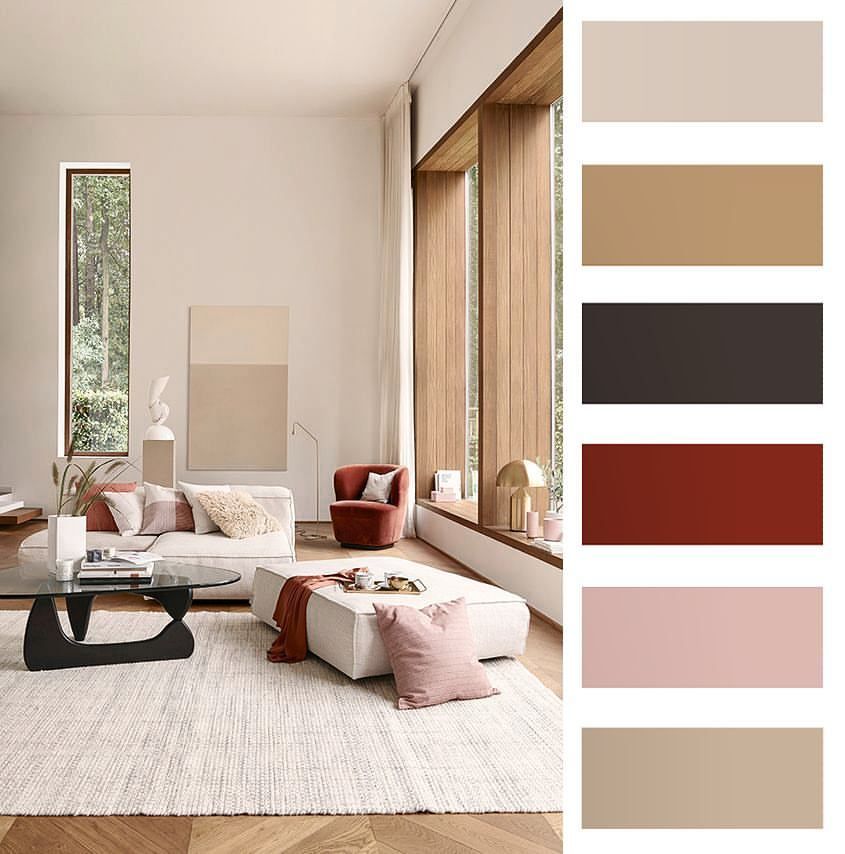
For those who don’t find sleeping to be too much of an issue, opt for something a little more invigorating. Bright shades are still a no-go, but consider warm earthy tones or red, orange and brown to create a scheme that will feel romantic in summer and cozy in the cooler months. An all-white scheme is soothing in its simplicity by night, but fresh and bright in the mornings.
What is the most relaxing color for a bedroom?
The most relaxing color for a bedroom is down to personal preference, but blue has been proven to induce a calming effect on the brain and is therefore an enduring favorite in the bedroom. Pair with crisp whites for a fresh look, or layer muted tones for a softer scheme. It even works surprisingly well en masse in darker shades – wall-to-wall navy blue is a growing favorite that looks stylish and is super relaxing.
Outside of blue, consider its closest relatives. After a year or so of being stuck indoors, green is gaining popularity for its affiliation with nature. Choose shades of sage and olive to stay on-trend, or create a jewel box effect with emerald. Purple works well for a warmer scheme, while soft greys are an on-trend choice for a soothing, neutral scheme.
Choose shades of sage and olive to stay on-trend, or create a jewel box effect with emerald. Purple works well for a warmer scheme, while soft greys are an on-trend choice for a soothing, neutral scheme.
And relaxing hues don't end with your paint or decor choices. Instead, experts have shared the best bed sheet colors to improve sleep, so you can rest easy that every detail in your room is working well for your wellbeing.
Jennifer is the Digital Editor at Homes & Gardens. Having worked in the interiors industry for a number of years, spanning many publications, she now hones her digital prowess on the 'best interiors website' in the world. Multi-skilled, Jennifer has worked in PR and marketing, and the occasional dabble in the social media, commercial and e-commerce space. Over the years, she has written about every area of the home, from compiling design houses from some of the best interior designers in the world to sourcing celebrity homes, reviewing appliances and even the odd news story or two.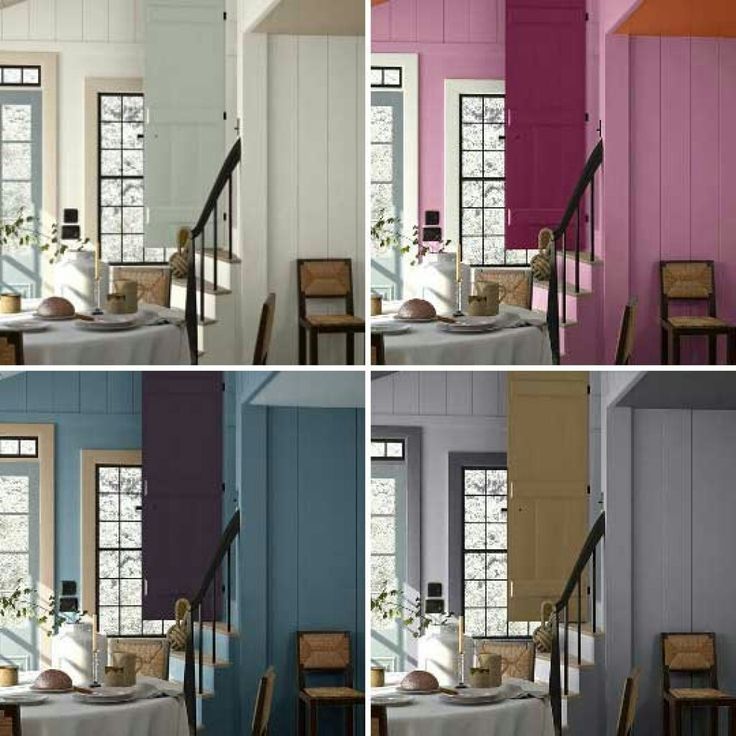
How to Choose the Right Paint Colors for Your Bedroom
By
Lauren Flanagan
Lauren Flanagan
Lauren Flanagan is an interior design expert with over 15 years of experience writing, editing, and producing articles for renowned Canadian publications and shows for HGTV on home decor. She worked in high-end home decor retail before discovering her passion was to share what she knew in publications and on television.
Learn more about The Spruce's Editorial Process
Updated on 01/10/21
The Spruce / Aubrey Hays & Niv Rozenberg
A bedroom is your personal sanctuary for rest, relaxation, and intimacy. Whether it's a primary bedroom, guest room, teen's room, or nursery, the wall color serves as a reminder of what you want to feel in the room.
For most people, calm and soothing colors are best in a bedroom. However, you may prefer deep, bright, or saturated colors to help you feel more awake, alert, or romantic.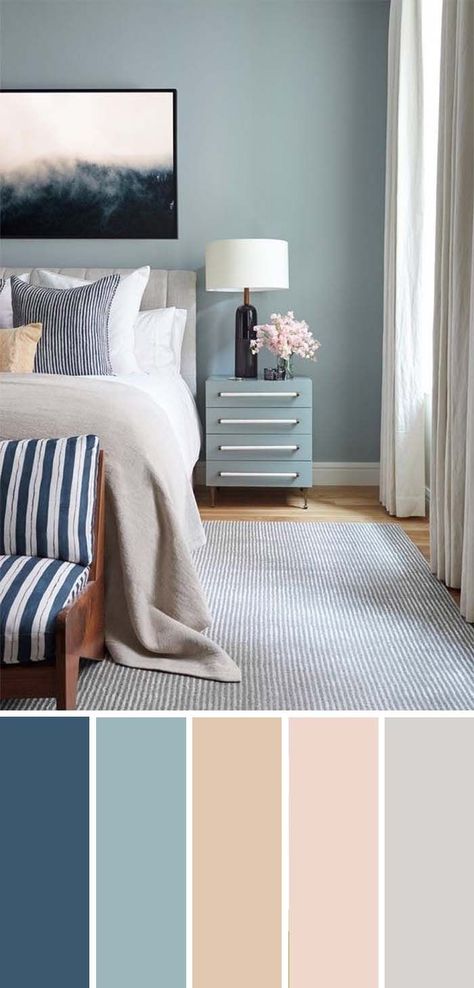 Set the right mood by considering how to pick colors for bedroom walls from these three groups of popular hues.
Set the right mood by considering how to pick colors for bedroom walls from these three groups of popular hues.
About This Term: Primary Bedroom
Many real estate associations, including the National Association of Home Builders, have classified the term "Master Bedroom" as discriminatory. "Primary Bedroom" is the name now widely used among the real estate community and better reflects the purpose of the room.
Read more about our Diversity and Inclusion Pledge to make The Spruce a site where all feel welcome.
Soothing Neutrals
Neutral colors are always safe and classic choices for a bedroom. Popular neutral colors include:
- Ivory
- Taupe
- Black
- Gray
- White
Neutral colors are clean backdrops for bedrooms because they work with other bright colors in bedding, curtains, carpeting, and artwork. Neutral bedroom walls allow you to let loose by using accenting vivid colors and patterns to transform the space.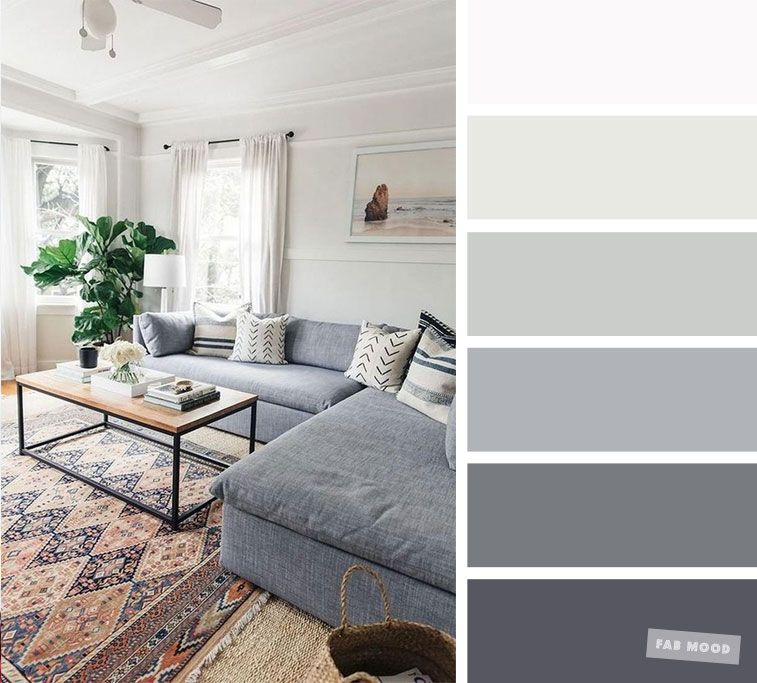 If you prefer to keep your bedroom all neutral, add interest with layered bedding and textured accessories for a soft tone-on-tone style.
If you prefer to keep your bedroom all neutral, add interest with layered bedding and textured accessories for a soft tone-on-tone style.
Learning how to choose neutral bedroom colors means taking into consideration the paint's underlying tones. For instance, white paint is rarely just pure white. Paints are often mixed with other hues to create subtle undertones of pink, blue, yellow, or brown, for example. The undertone should match your furnishings, carpet, and bedding or the room could feel unpleasant. Paint experts at your paint store can help you determine the best neutral shade and undertone for your bedroom.
Peaceful Pastels
Pastel colors are soft, relaxing, and result in serene surroundings. The best pastel colors for bedrooms include:
- Soft blues
- Lavenders
- Greens
- Yellows
- Pinks
A bedroom with a pastel wall color can look elegant. Find the sophisticated side of pastels by mixing and matching a few washed-out colors that you'd find in a favorite quilt, add light gray bedding and accessories into the mix, become inspired by watery coastal hues, or anchor a bedroom with light and pretty walls with darker furnishings.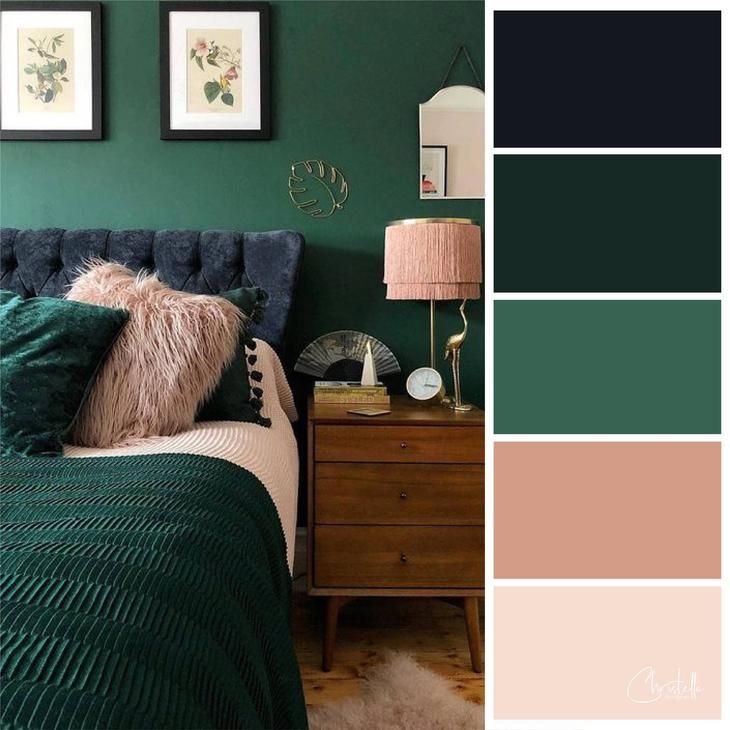
Expressive Colors
If bold and bright colors make you happy, why not paint your bedroom walls to bring a smile to your face? If you're an energetic person who loves to be surrounded by saturated colors, embrace the look. For example, if you love bright, fresh interiors, try deep spring green walls. Experiment with lively combinations, such as coral and dark green or red and taupe.
There are a couple of guidelines to remember when choosing dark paint colors for bedrooms, such as black or navy blue, especially if the space is small.
- Avoid feeling boxed in. You don't need to paint every wall the same color.
- Accent with color. Choose an accent wall to paint and leave the other walls a lighter color.
- Emphasize length with color. If you have a deep, narrow bedroom, paint one of the longer walls to highlight the length of the room.
Keep in mind that light colors make a space look larger and darker colors make a bedroom appear smaller.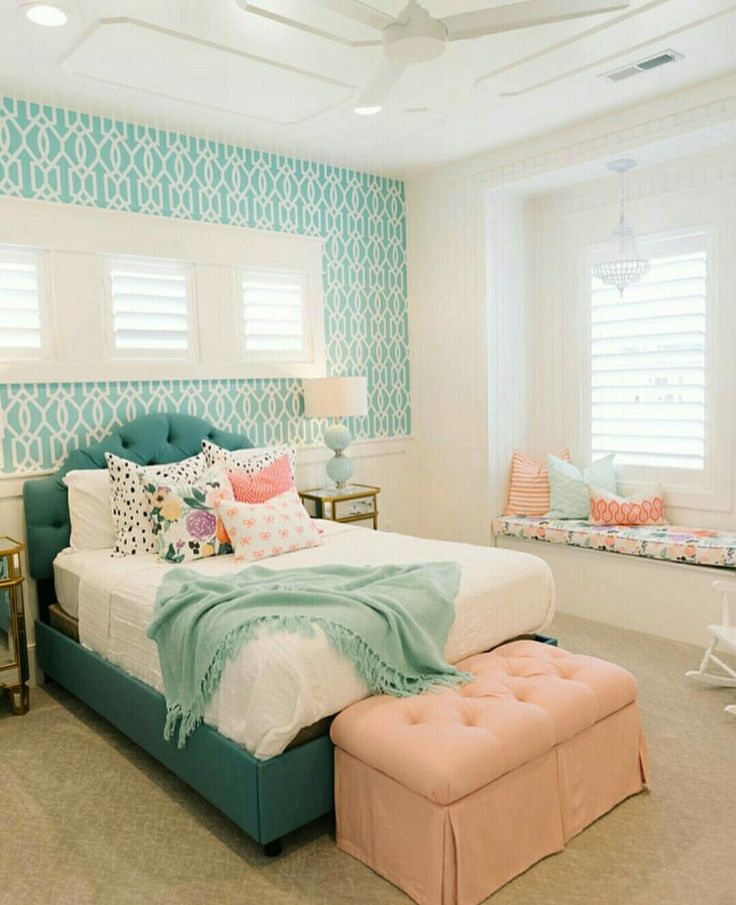 If there's a lot of natural light streaming into the bedroom, the room can also appear larger
If there's a lot of natural light streaming into the bedroom, the room can also appear larger
Choosing the color of the bedroom
Every person wants to have coziness and comfort in his bedroom, pleasant atmosphere in the room is the first step to a good mood in the morning. The color of walls, furniture, accessories plays an important role, because even the internal state of a person in a room can depend on it.
Ancient healers noticed that different shades of flowers can have a positive or negative effect on a person's well-being and mood. There is even a whole science - chromotherapy, which allows you to treat people with the help of exposure to different shades.
Chromotherapy can also be used in the interior, because color is an energy that is transmitted in the form of various electromagnetic waves that affect people.
The color scheme of the bedroom can be different, but it is not worth decorating the interior design exclusively in one pure color, it is better to choose the best combinations, where one color will be the main one, and the others - accentual.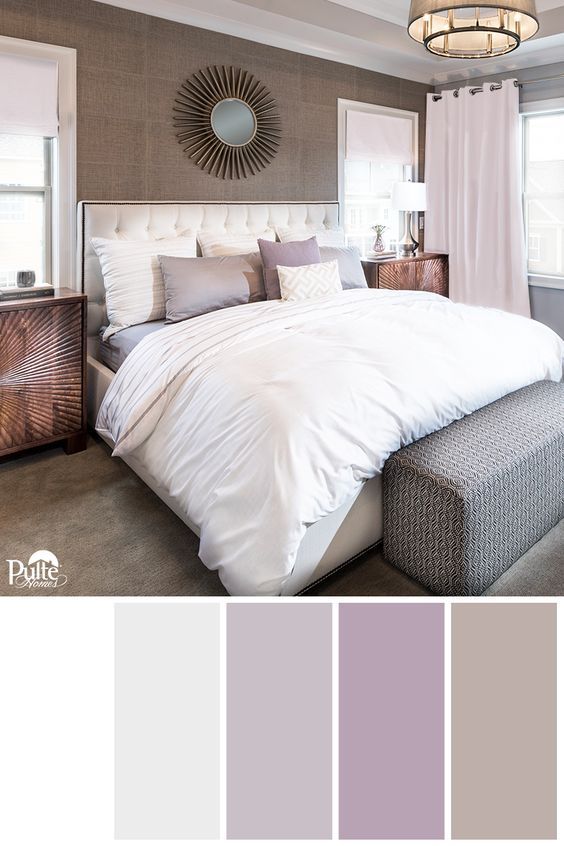
Influence of bedroom colors on a person
If we turn to such a science as chromotherapy, we can come to a simple conclusion that each shade affects the well-being of the owner of the room in its own way.
Let's look at the basic colors:
- Red. This color is quite aggressive, it has a stimulating effect on the nervous system, but can only be used as an additional color. In a bedroom with red walls, restoring strength is very problematic.
- Yellow. This is the color of creative energy, it harmonizes the processes of the nervous system. It can be used as the main one when decorating a rest room.
- Blue. Calms, relaxes, slows down the processes in the body. Also recommended as an accent color.
- Orange. Something between yellow and red, its shades can be used as the main ones - peach, apricot.
- Green. It is considered one of the most harmonious colors, promotes relaxation, harmonization of the body.
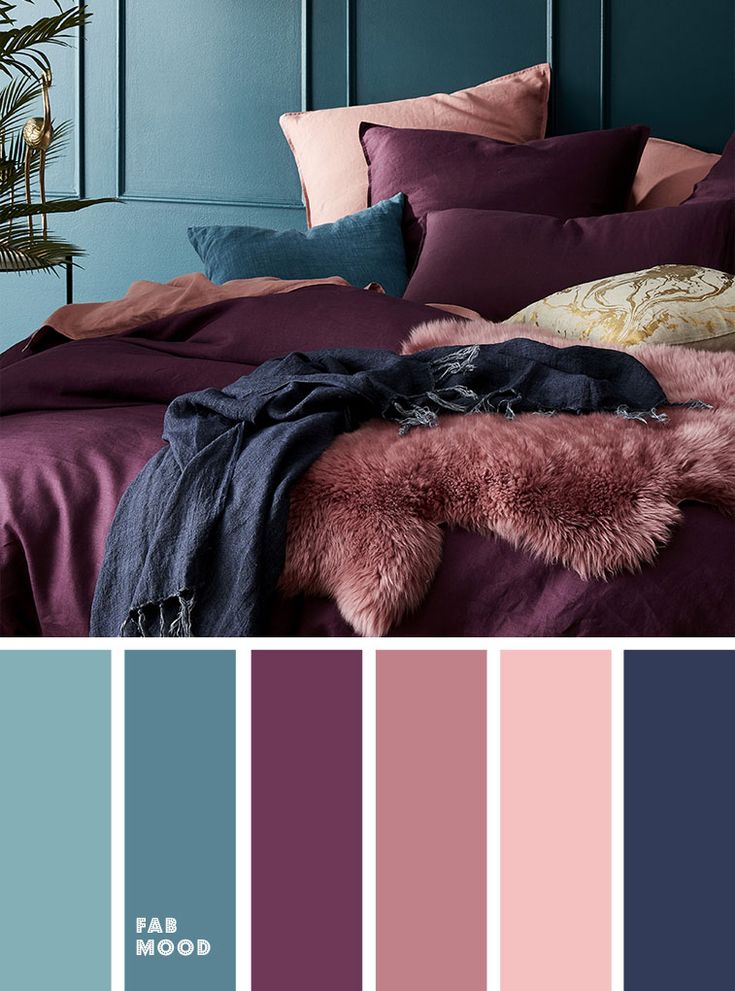 Can be used as a primary or secondary color.
Can be used as a primary or secondary color. - Pastel colors. Creamy, ivory, beige, light green, cream are best suited for the bedroom. You can “revive” them with the help of bright color accents.
- Black. In large quantities, this color has a depressing effect on the body, so it is recommended to use it as accents in the bedroom.
- Light blue, light green. This is the so-called marine color scheme, they are perfectly combined with many shades - brown, orange, gray.
When choosing a color, you need to take into account many factors: for a bedroom with windows facing north, warm colors are preferable, and cold colors are south facing. Light colors work better with dark furniture and flooring, and vice versa.
An interesting option would be the so-called accent wall: it will be painted in a dark or bright tone, and other walls in pastel. If you have chosen a light color as the main one, then carpet, curtains, bedspreads, pillows, accessories and other elements can become bright accents.
It is also worth remembering that even images can affect mood. The bedroom, in which there are sharp and sharp drawings, seems uncomfortable, but wavy and smooth lines, on the contrary, soothe. Geometric shapes give some stability to the interior, trees and flowers contribute to relaxation, and cheerful animals set in a good mood. Genre pictures quickly tire, so it is not advisable to use them in the bedroom.
Choice of color according to style
Depending on the style in which your bedroom will be decorated, you need to choose the main color.
- Classic and modern. For these styles, cream, beige, milky shades, coffee with milk colors are suitable. You can make a contrasting interior by combining pastel colors with black, chocolate or rich purple.
- Hi-tech. This style is characterized by the presence of shiny surfaces, glass and mirrors. Walls can be painted white, steel grey, with black or red accents.
- Ethnic style.
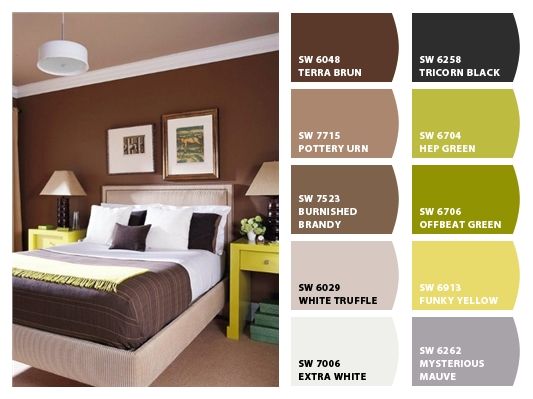 When choosing a background for such a bedroom, do not rush to purchase wallpaper with bright ornaments or hieroglyphs, the walls are the background, so let it be as uniform as possible. Choose colors that are close to natural - light brown, pale green, pinkish, blue. You can combine these shades with imitation of reptile skin or animal skin - it will turn out very stylish.
When choosing a background for such a bedroom, do not rush to purchase wallpaper with bright ornaments or hieroglyphs, the walls are the background, so let it be as uniform as possible. Choose colors that are close to natural - light brown, pale green, pinkish, blue. You can combine these shades with imitation of reptile skin or animal skin - it will turn out very stylish. - Provence and country. These styles are close in spirit, the design of the bedroom should be cozy and warm, the shades are mostly natural: cream, milky, lavender, light green and others. Do not get carried away with imitations, the materials must also be natural.
- Rococo. This style is characterized by nobility and pretentiousness: a combination of beige and dark brown, purple with silver, white with gold or carmine pink will look beautiful.
- Oriental style. One of the few styles in which bright shades are a pattern. Gold, burgundy, yellow, blue - all these colors can be embodied in the interior.
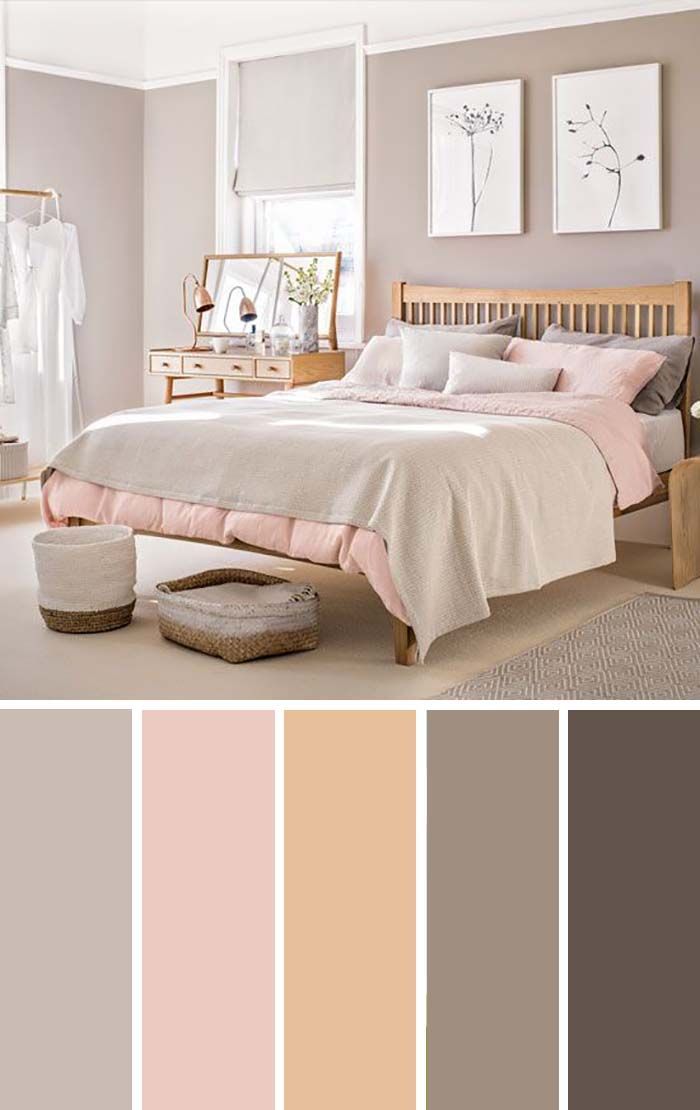 You can arrange accessories in bright colors, but make the walls plain - it all depends on your preferences.
You can arrange accessories in bright colors, but make the walls plain - it all depends on your preferences.
When choosing the color of the walls, you need to take into account that the same shade in the morning and in the evening will look different. So if you are going to paint a wall, paint a small area and see how the color changes throughout the day.
How to choose drawings in accordance with the shape and size of the bedroom?
For a small room, it is better to choose light, but cool colors - green, blue, lavender, but bright and warm colors give comfort, but also visually reduce the bedroom.
You can visually stretch the space using horizontal patterns, but diagonal stripes and patterns will help smooth out the roughness of the wall, hide niches and unsuccessful ledges.
A south-facing bedroom will be less hot if you choose white, aquamarine, turquoise or mother-of-pearl shades for it with a glossy surface.
For a spacious bedroom, you can use color compositions: blue and light green, lavender and plum, burgundy and pale pink, carmine and eggplant, green and silver - such tandems seem very dynamic and original.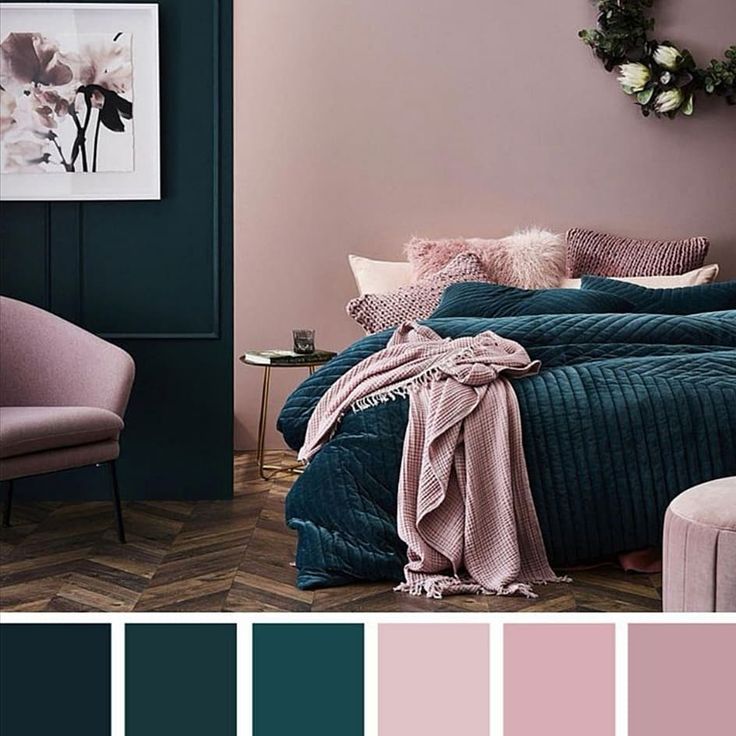
For zoning the room, you can paint the walls in different shades: for example, in the sleeping area, the wall above the head of the bed can be made darker, but near the closet or table - painted in a light shade.
High ceilings can be visually reduced by using wallpaper in the same color as on the walls of the room, but wallpaper with stripes or vertical patterns will help to visually increase the height of the ceiling.
When designing a bedroom, listen to your inner feelings: you should be comfortable in the room. If both the color is fashionable and the style is ultra-modern, but the soul does not lie, it is better to turn to traditional shades. And in the HomeMe.ru catalog you can always easily select furniture of the right color for your interior. Choose a comfortable sofa, a functional wall or a spacious closet, as well as interesting sets for the bedroom. Enjoy the harmony of your home and a good rest in it.
What color should the bedroom be
A person is constantly surrounded by smells, sounds, sensations that form an idea of the surrounding world.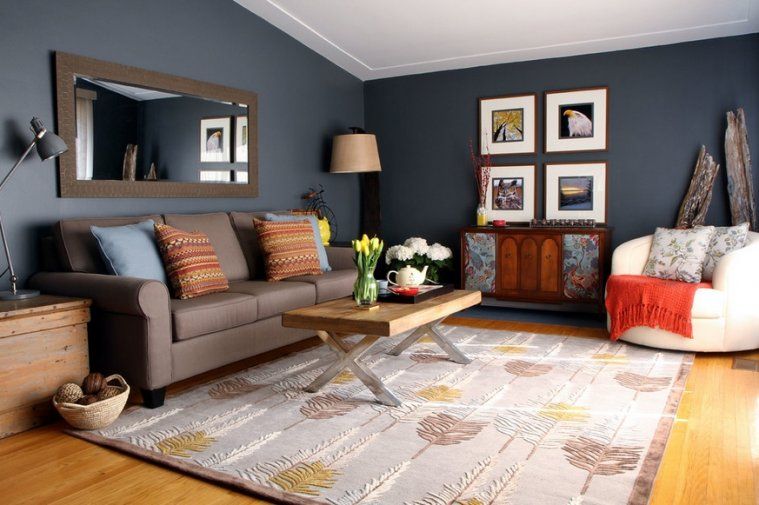 The most informative sense organ is sight. We see the faces of loved ones, admire works of art, admire amazing pictures of nature, rejoice at our native walls when we return home.
The most informative sense organ is sight. We see the faces of loved ones, admire works of art, admire amazing pictures of nature, rejoice at our native walls when we return home.
The perception of life would be inexpressive and featureless if all these visual images did not have colors. Without a palette of tones around us, it is difficult to adapt to the environment, it paints life with emotions, makes us think creatively, choose and act.
What color to choose for the bedroom - the main factors
Color is a whole science. Its natural factor, the totality of physical characteristics, the presence of the phenomenon of color in culture is studied by color science. There is another science - coloristics, which explores color in the aspect of philosophy and psychology. Color models, shades have a huge impact on the human subconscious. With confidence backed up by scientific research, one can characterize color as a great psychologist.
Every evening we go to the bedroom to rest, sleep, gain strength for the next day.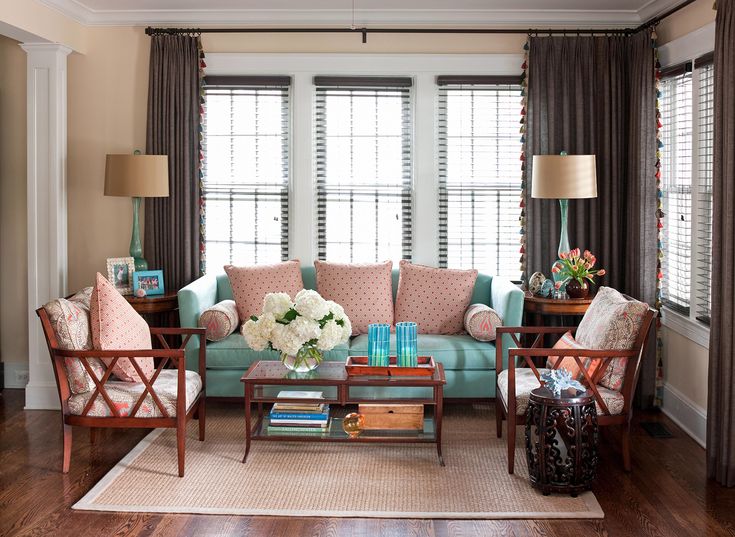 Since color can influence the human psyche, we have the opportunity to receive the service of a professional "psychologist" from the color design of the room: positive emotions, comfort, complete relaxation, and, as a result, sound, healthy sleep. This is the case if its color scheme is chosen correctly!
Since color can influence the human psyche, we have the opportunity to receive the service of a professional "psychologist" from the color design of the room: positive emotions, comfort, complete relaxation, and, as a result, sound, healthy sleep. This is the case if its color scheme is chosen correctly!
The choice of palette and design of the bedroom is individual. Someone likes natural greenery that is pleasing to the eye, someone will prefer the warm shades of autumn, the originals will choose a combination of contrasting bright tropical strokes. But there are at least three main factors that should be followed when choosing paints:
- The style of the room.
The existing canons of style always define the main color compositions. For example, a universal white color scheme is suitable for classics, minimalism, Provence, high-tech styles.
Lilac color is more selective, it is used in oriental, art deco, eclectic design.
- Room lighting.
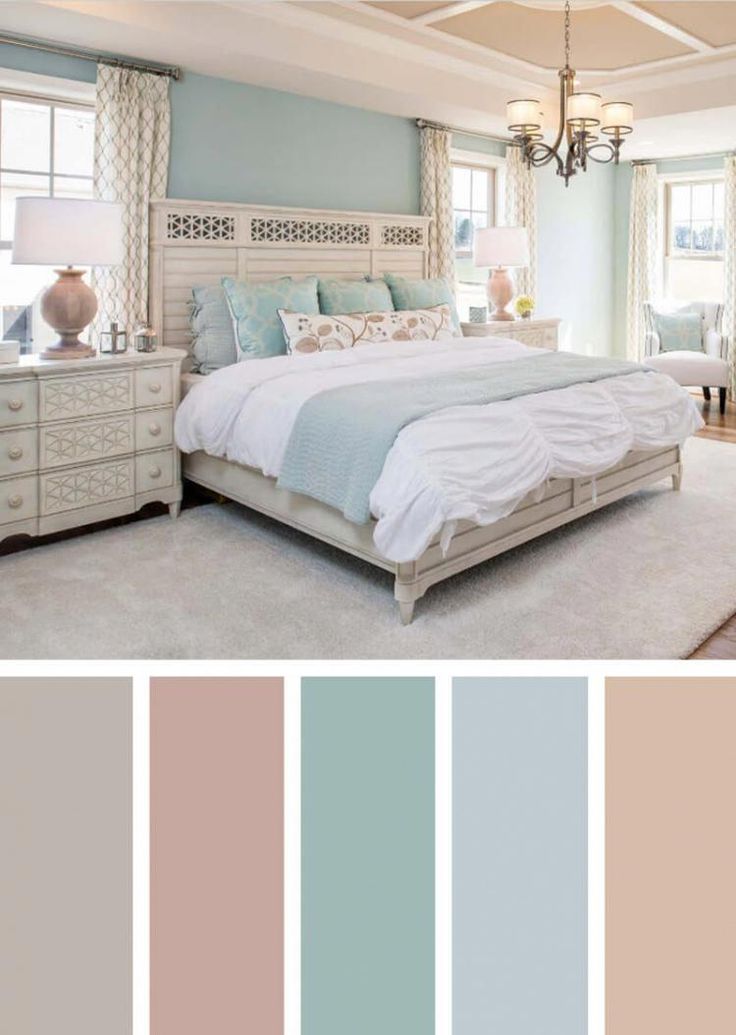
In dim, subdued light, dark tones are unacceptable.
- Bedroom area.
For small sizes, light colors are more suitable, which can be enlivened with bright accents in the form of pillows, paintings, lamps.
For a large room, the choice of color palette is wider. Hue plays an important role, any color has many options for tone and degrees of saturation.
What psychologists say
It is worth listening to the opinion of professionals, especially when it comes to the design of a place of rest. Psychologists have specific recommendations on the color design of the bedroom. Most of them agree that calm, pastel colors are the best choice. They contribute to good sleep, relaxation, restoration of energy spent during the day. There is also a specific color leading in all polls and ratings - beige and its shades. It looks great in the interior, conducive to a creative approach in working on a bedroom design project.
Psychologists consider the popular white color to be excessively cold. But it is not at all necessary to refuse a pure, light tone and its varieties (pearl, ivory, milk and others). It must be applied skillfully and thoughtfully so that the bedroom does not resemble a branch of a medical institution and is not faceless and empty. White color scheme is the perfect backdrop for all decorative elements. It will emphasize the beauty of textiles and lamps, highlight a spectacular dresser or console, visually enlarge the space and fill it with freshness.
For adults who want to relax before going to bed, green and yellow tones are more suitable than others.
Young people and teenagers who spend their days actively require a quick transition from vigorous activity to rest. This will contribute to the blue and blue colors.
Psychologists do not refuse bright orange, which will perfectly enliven a children's bedroom.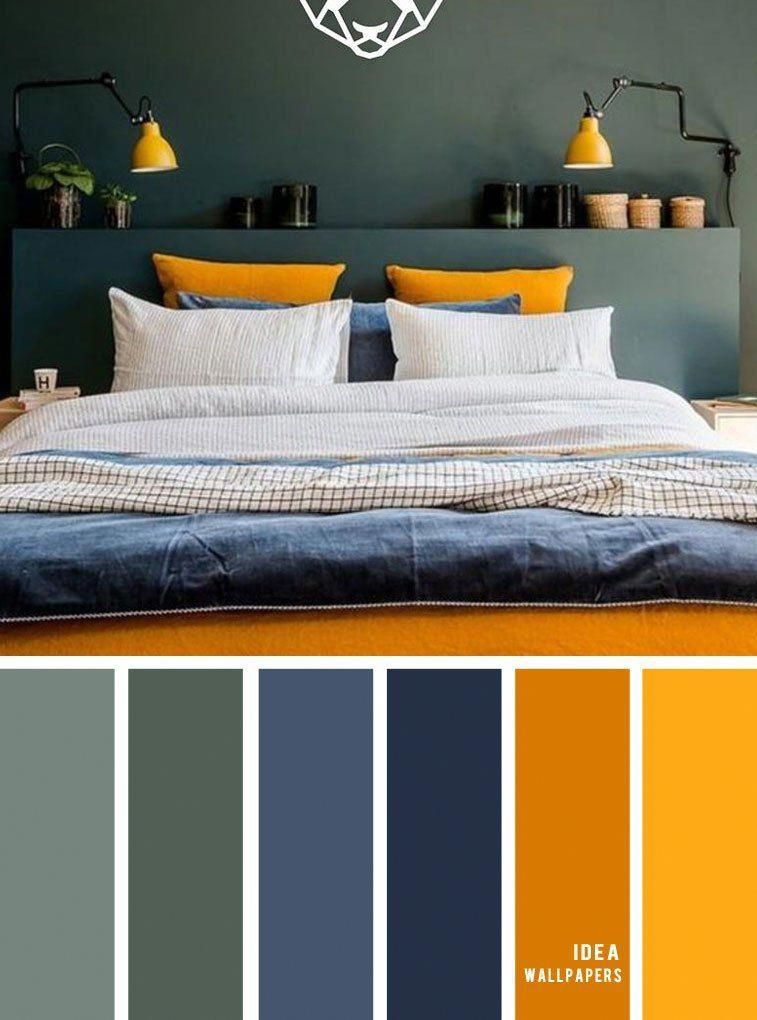 Scarlet, coral, burgundy colors are applicable in the design of matrimonial chambers.
Scarlet, coral, burgundy colors are applicable in the design of matrimonial chambers.
It is recommended to place fragments with non-standard colors on the wall at the head of the bed.
Feng Shui rules
Fashionable oriental philosophy also contributed to the creation of the bedroom interior. Following its postulates, it is necessary to take into account:
- The direction of the sides of the horizon.
- A bedroom facing north or northwest should be decorated in blue tones diluted with other colors.
- The south side calls for red, but in a restrained composition.
- Eastern and southeastern directions prefer the color of natural greenery.
- Gray, silver, purple, lemon colors are preferred to the West.
- Northeast, southwest orientation should repeat the colors of the Earth, close to natural brown, terracotta, coffee and beige colors are needed.
- The Chinese vision of the bedroom interior excludes the combination of black and white.
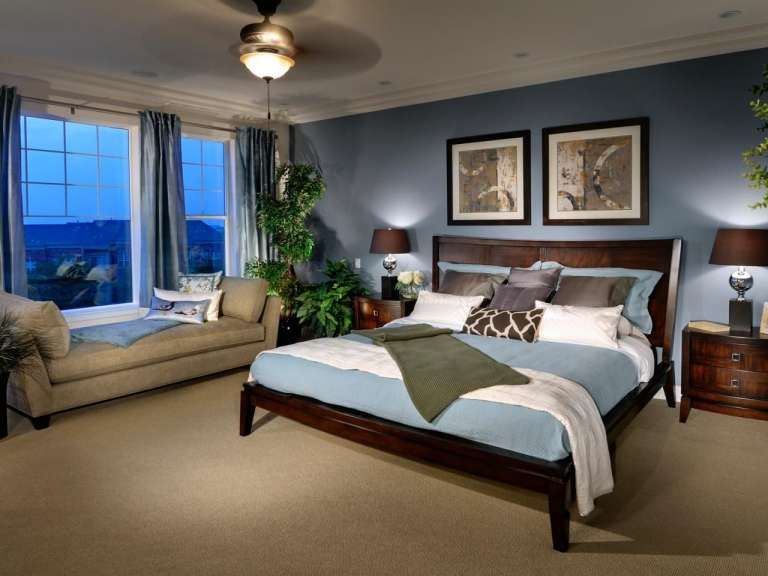
- The presence in the bedroom of the spouses of the red color of passion.
- All shades should be muted, no bright strokes.
The Chinese consider the bedroom to be the most important room in the house and devote maximum effort to decorating it. In addition to the "wrong" colors, the Feng Shui treatise prohibits the installation of a suspended ceiling, TV and mirrors in the bedroom. The door to the sleeping room must be kept closed at all times.
Dependence on cardinal points
All colors are divided into warm and cold. There are special tables that clearly demonstrate this distinction. The most popular "cold" colors that are used to decorate the bedroom are white, gray, green, blue, blue, turquoise, lilac, purple and their shades. "Warm" are: yellow, beige, orange, pink, red, burgundy, brown and their tones.
Now let's turn to the question: which side of the world is your bedroom facing?
South
There is enough light in the room, but the excess of the sun is tiring and its partial neutralization is desirable. In this regard, it is recommended to use the colors of the cold palette. It is able to weaken the saturation of light, bring coolness, and at the same time visually enlarge the room, add space, positive. In such an interior, dark and bright colors are quite appropriate as a finish.
In this regard, it is recommended to use the colors of the cold palette. It is able to weaken the saturation of light, bring coolness, and at the same time visually enlarge the room, add space, positive. In such an interior, dark and bright colors are quite appropriate as a finish.
North
In a north-facing bedroom, the sun will be a rare visitor. In clear weather, the light penetrating into it will bring a bluish tint to walls and objects, in a gloomy and cloudy sky, the tone of daylight will be gray. To correct the lack of light and neutralize the gloomy component, it is advisable to use warm colors for decoration. Deep, saturated shades are suitable, there is a reason to refuse white.
East
The sun shines through the bedroom window facing the sunrise in the morning. With its golden rays, the green color and its shades are in perfect harmony. Cool turquoise, lilac, gray colors will be a good solution.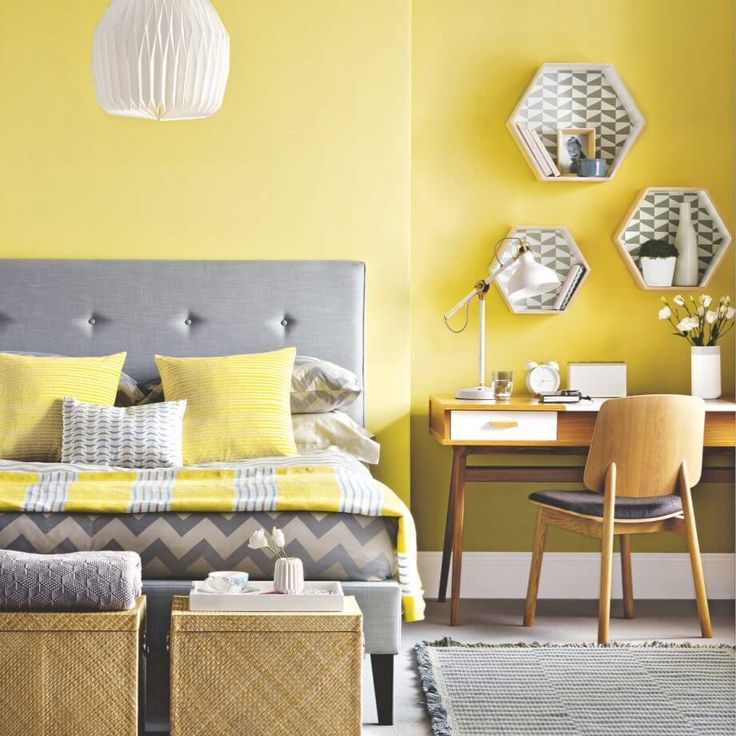
West
from the bedroom window can be observed. I want to extend this ritual, to delay the rays of the departing luminary longer. Beige, sand, chocolate colors, soft shades of brown will help. The presence of decorative elements, textiles of bronze and golden hues will duplicate the evening reflections, bring additional comfort to the interior.
What color to paint the bedroom in - the optimal range of colors and top 20 successful color combinations
Let's give examples of popular colors for the bedroom and their combinations with other colors. Top 20 Solutions!
1. Pure white combined with black is a stylish and timeless solution. Geometric classics: polka dots, checkerboard cells, contrasting zebra stripes, ornaments and patterns of various themes look win-win.
2.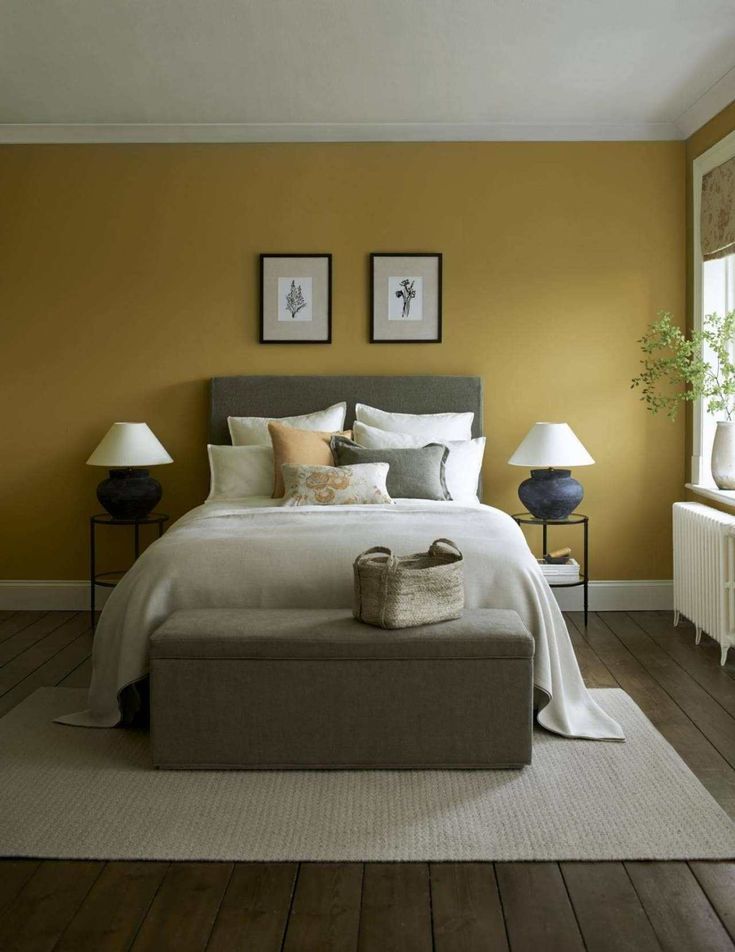 White plus brown allows you to form complex decor designs, experiment with patterns and textures, include third colors, such as gold, turquoise, beige. In bedrooms with good lighting, brown color should prevail, in the northern chambers - white. 3. White and turquoise bring a sense of joy and serenity. Let white prevail, refreshing turquoise give accents and design details.
White plus brown allows you to form complex decor designs, experiment with patterns and textures, include third colors, such as gold, turquoise, beige. In bedrooms with good lighting, brown color should prevail, in the northern chambers - white. 3. White and turquoise bring a sense of joy and serenity. Let white prevail, refreshing turquoise give accents and design details.
4. Unobtrusive beige and brown color noble, elegant combination. This bedroom is warm, cozy and comfortable. The beige color creates a good background, visually increases the volume, allows you to use other colors in the decoration: green, burgundy, yellow, white.
5. Beige together with blue will create a romantic space, fill the bedroom with a fresh breeze. Cold blue can be turquoise, cornflower blue, emerald green. The warmth of the beige tone, additional yellow or brown colors in the interior neutralize the apparent coldness, add comfort and warmth.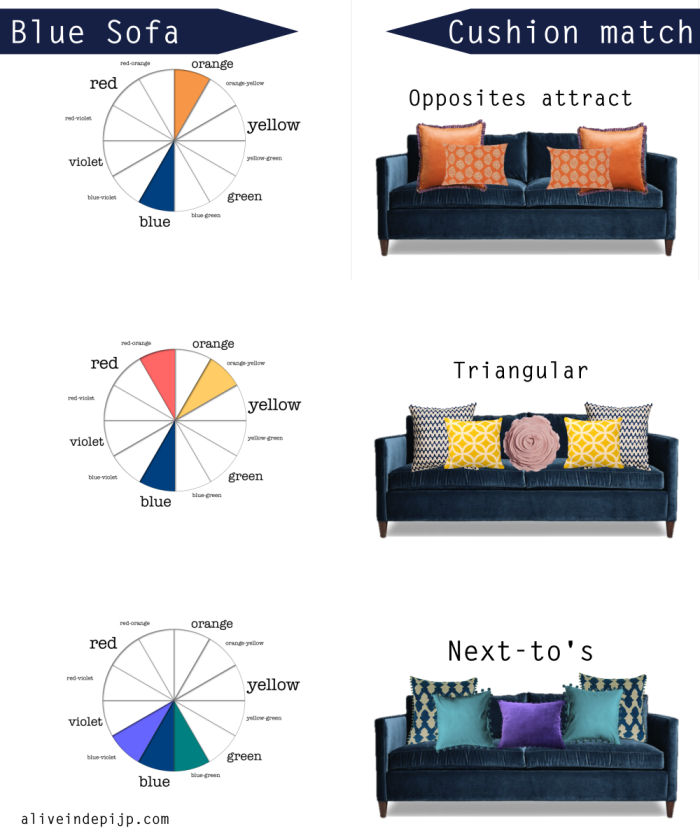
6. Green and white make a great combination. It is so harmonious that psychologists call it "light sleeping pills." Natural colors of light green, pistachio, olive, lettuce, dusty green, jade are refreshing and emphasized by the white gamma. Additional shades are not required.
Complement it with orange, brown or white finishes. The background will serve as a warm peach tone.
8; Green and neutral beige are a wide field for design ideas. Everyone will serve as the main color with equal success. Excessive frills are not needed, an expressive interior will be created by multi-level compositions, floral ornaments, geometric patterns.
9. Deep blue and elegant gray will form successful combinations for a trendy loft style. In order not to create a gloomy atmosphere, one should not overdo it with the blue color; two walls painted in it or large patterns on textiles are enough.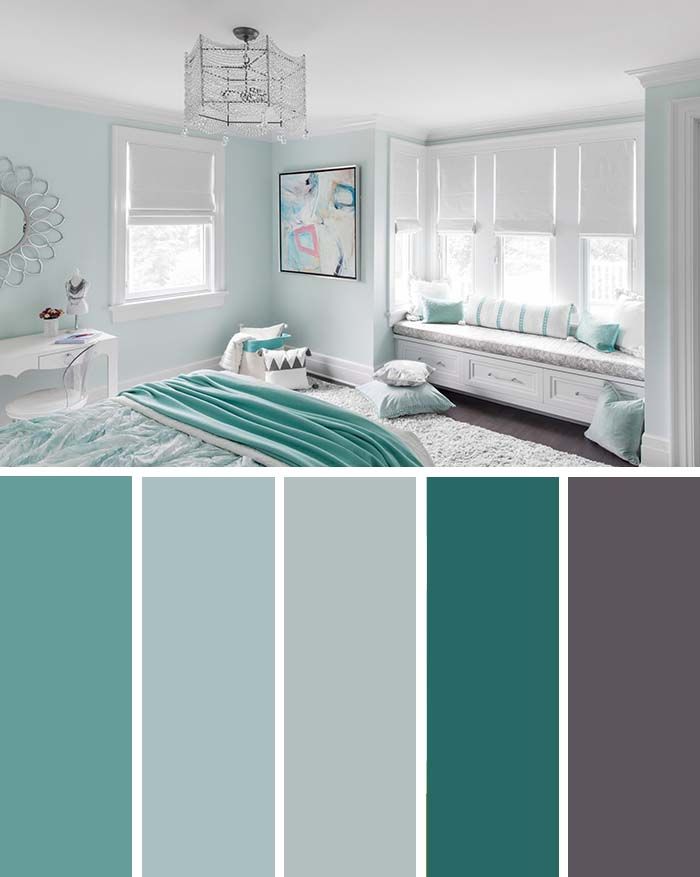
10. Blue plus white. This range will certainly appeal to fans of the marine theme. Don't forget the seascapes on the wall! Ornate patterns will be out of place, white and blue geometry and abstraction are perfect. Light brown or turquoise tones are allowed in the decoration.
Pink powdery and coffee colors create a cozy, intimate atmosphere, conducive to relaxation. Gorgeous ash-pink background with chocolate tone details.
12. Light brown plus blue balance each other. The warmth of the color of natural wood is complemented by the freshness and airiness of blue. Its shades can be any: turquoise, gray-blue, sky blue. Beige, white or gray colors will complement the composition.
13. Relaxing gray and classic white plays will remind black and white films or old photos.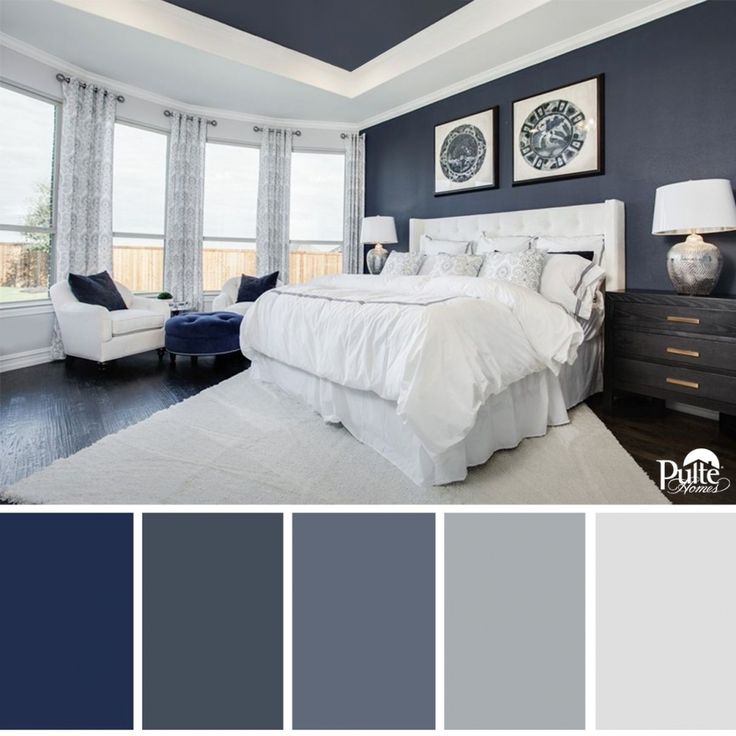 Geometric patterns, abstraction are perfect for this combination. Do not break the atmosphere of charm with bright details.
Geometric patterns, abstraction are perfect for this combination. Do not break the atmosphere of charm with bright details.
On a light gray background, a fuchsia finish will look wonderful. Graphite - will emphasize the elegance of an ash rose, for pearl gray it is permissible to add more pink powder.
15. Gray plus rich yellow are monolithic severity and fun of the sunny "bunny". The background should be a gray tint, it will enliven, add mood and warmth, a bright accent of honey, bright yellow, golden color. A lot of glare is not needed, curtains, pillows, small rugs or a bedspread will cope with this task.
16. Sensual lilac and pure white bring peace, romance and positive energy to the bedroom. Against the dominant white background, the lilac zone at the head of the bed, abstract ornaments on the walls look great.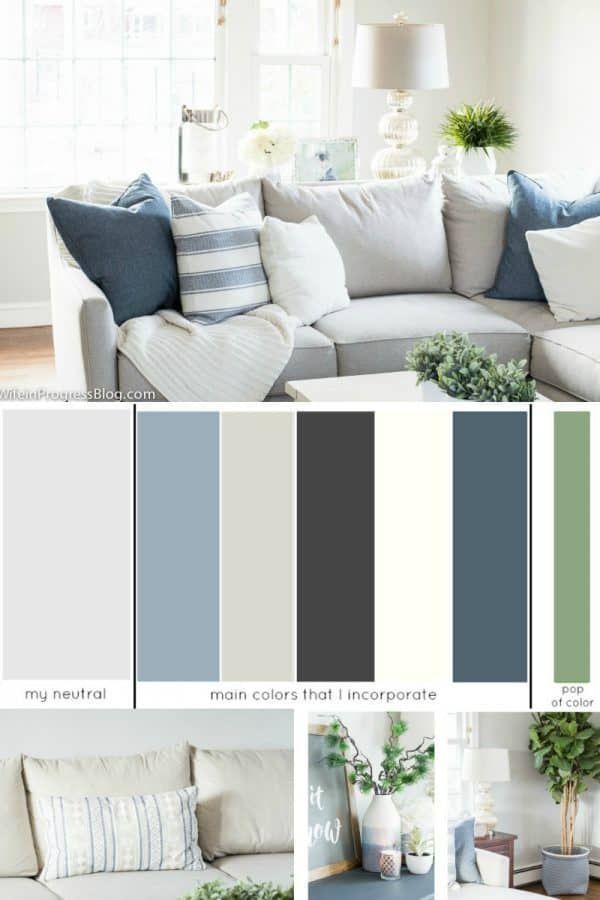 Glossy surfaces and mirrors are desirable in the room.
Glossy surfaces and mirrors are desirable in the room.
17. Lilac and deep black. And such a combination is possible! The main thing is to correctly place the accents. Lilac fog and the fantastic presence of a black surface can create an atmosphere of cosmic happiness. Details of black textiles will bring theatrical drama, which will be facilitated by abstract or damask patterns on pillows and bedspreads.
18. Lilac and yellow create a royally opulent setting. A snow-white tone will effectively fit into this luxurious pair in the form of stucco patterns or even moldings on the ceiling. A golden yellow color will be a good background.
This combination of colors certainly requires the presence of a third: beige, light brown or white. Floral ornaments, uncomplicated patterns are appropriate in such a range.
20.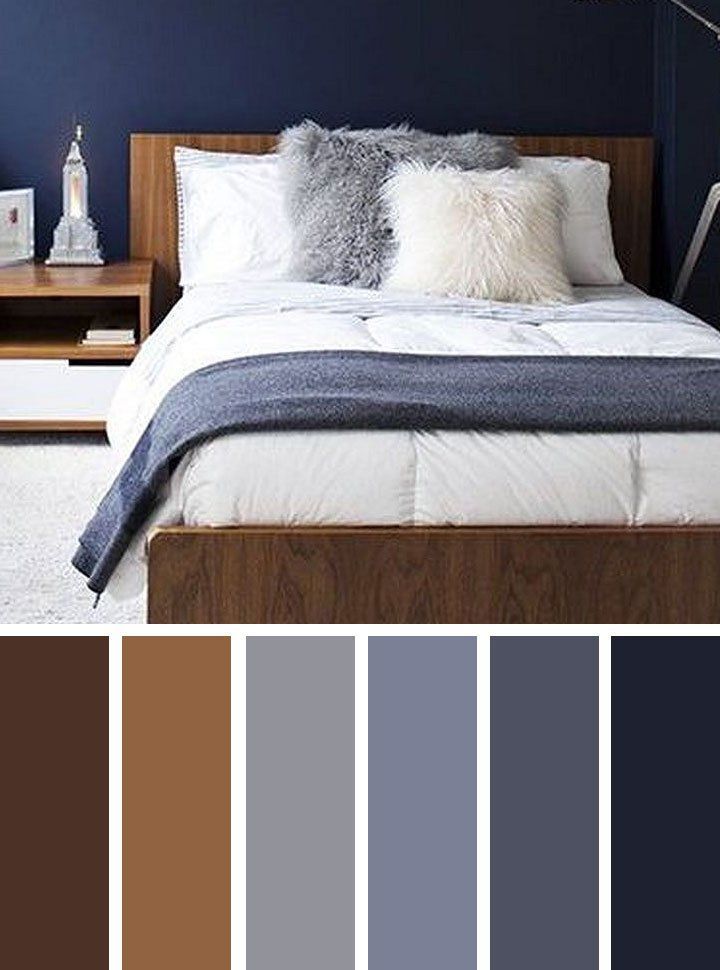 Turquoise color plus elegant chocolate combination is bold and stylish. So that the brown color does not introduce gloomy notes into the interior, introduce it in doses, refreshing with a white or milky tone. A cheerful note of turquoise will be very helpful.
Turquoise color plus elegant chocolate combination is bold and stylish. So that the brown color does not introduce gloomy notes into the interior, introduce it in doses, refreshing with a white or milky tone. A cheerful note of turquoise will be very helpful.
Tips for choosing
As wise people say: listen to all opinions, and do as you see fit. There are many, many opinions, advice, instructions, suggestions, but you have one bedroom. The final decision is up to the owners of the premises, only they are here to relax, dream, love, dream and make plans for the future. The interior should give spiritual comfort and provide psychological support. Keeping the first sentence of this paragraph in mind, read the good advice.
- If you have doubts and the desired composition of the interior color scheme does not line up, contact a specialist. A professional designer is better than a neighbor or girlfriend to solve the problem.
- Listen to your inner voice and choose your preferred colors and shades.









